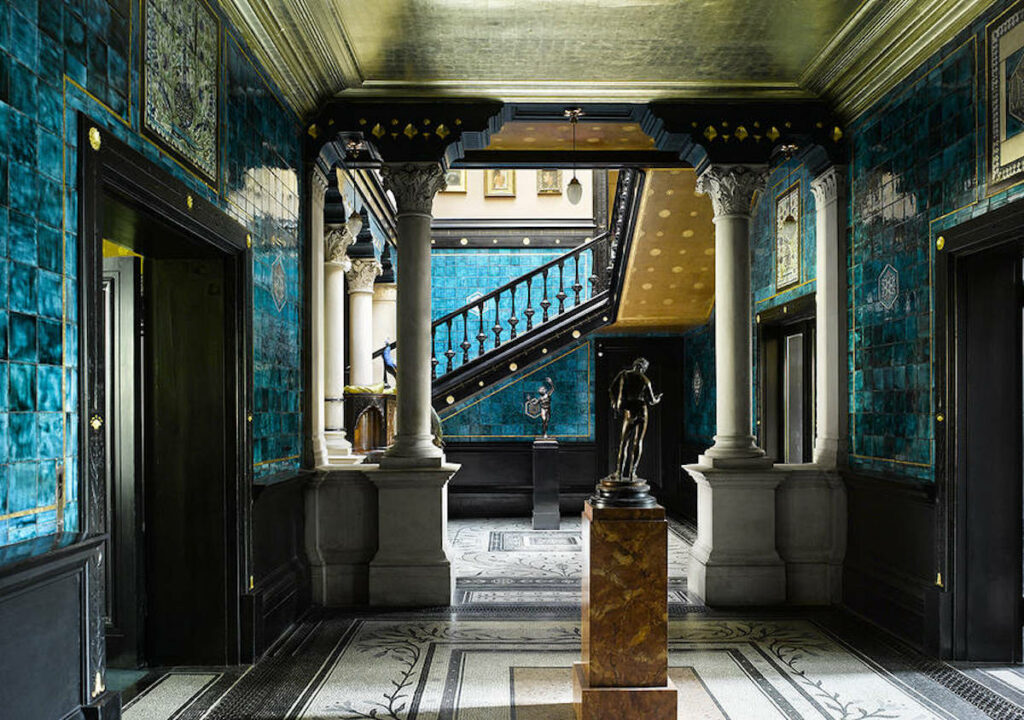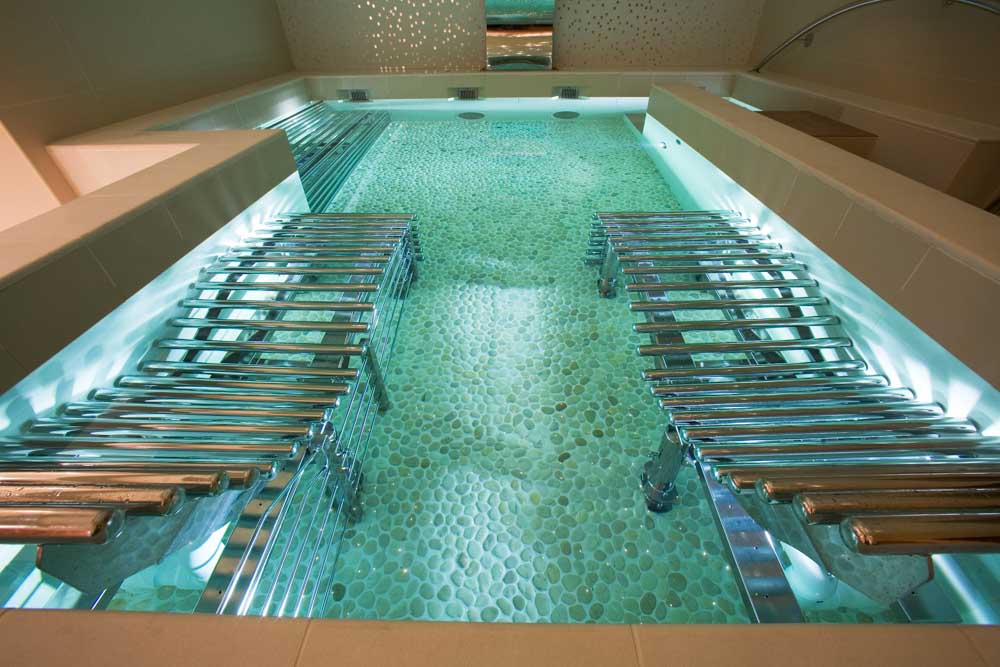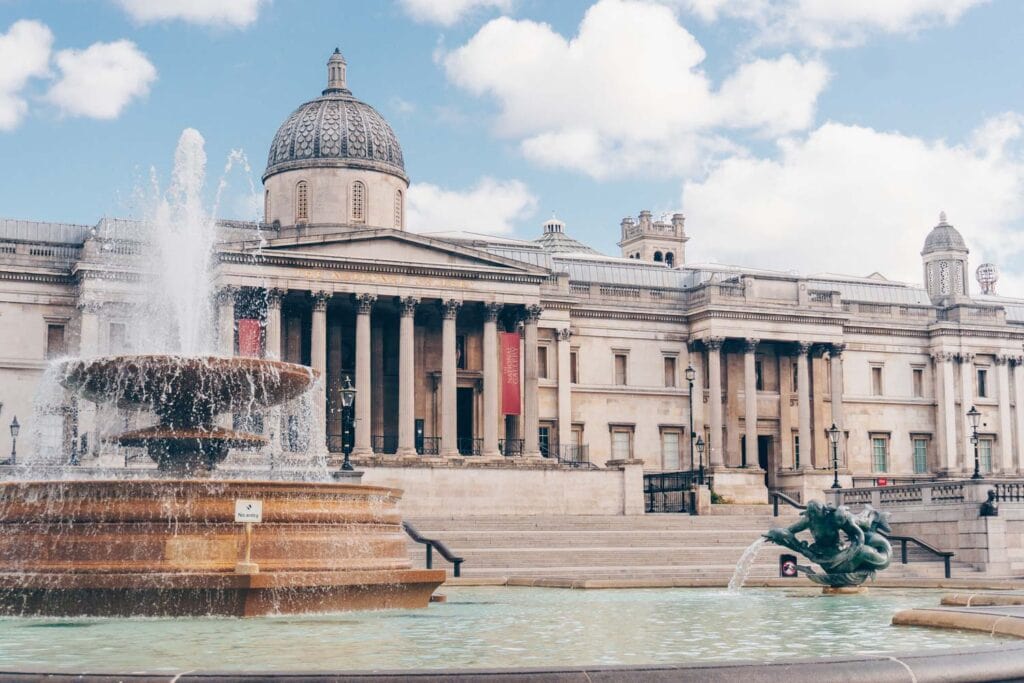Think it’s all “been there, done that” when it comes to London? Think again. London is full of secret spots for you to explore. Need inspiration? Check out these 56 quirky, weird and unusual things to do in the capital.
London has a lot going for it. There are the big attractions, the museums, the galleries… basically the stuff that everyone talks about.
But sometimes, well, we’re a bit over the obvious stuff right? We’ve done all the big things to do around the city and are looking for something a little quirkier to occupy our time.
We hear you – we’ve all been through phases where we feel totally “over” London. Somehow, we think that because we grew up here, or have spent years writing about London, that we’ve seen it all. Incorrect.
So we set out to discover some of the more unusual places to visit in London, the quirky spots and obscure pastimes. From stunning cathedrals of sewage (yes, that’s a real thing) to ghostly tube stations, and from off-the-beaten-track museums to hidden Roman temples, this is what we found.
Quirky & Unusual Things to do in London
Worship a Roman God at the London Mithraeum
The City of London
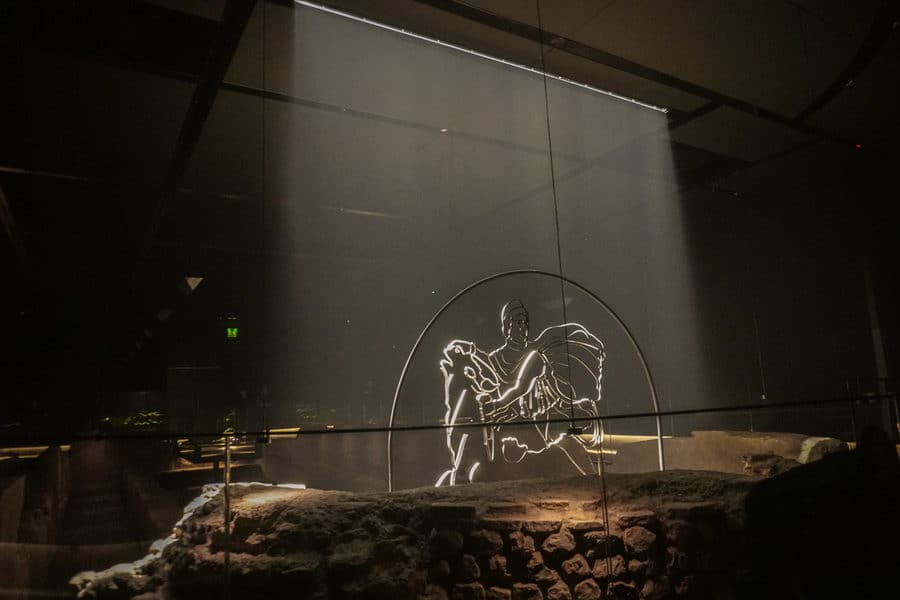
The Mithraeum is a gem of a find. Looking for an unusual way to spend an afternoon? How about an immersive experience based around the ancient Roman Temple of Mithras underneath the Bloomberg Offices slap-bang in the heart of the city? Thought so.
We’d never even heard of the Mithraeum before stumbling on it while visiting St Stephen’s a few doors down the road, but it was a revelation.
The Mithraeum is set over three floors – one showcasing the Roman artefacts found on the site, the second explaining who Mithras was (the deity of loyalty to the emperor) and how people worshipped him and the third the temple itself.
The temple dates from the 3rd century AD – the ruins are part of a short sensory experience that plunges you into the mystery of worshipping in a Roman temple. Totally weird, very memorable and completely wonderful.
Check out the Fake Houses of 23 and 24 Leinster Gardens
Paddington
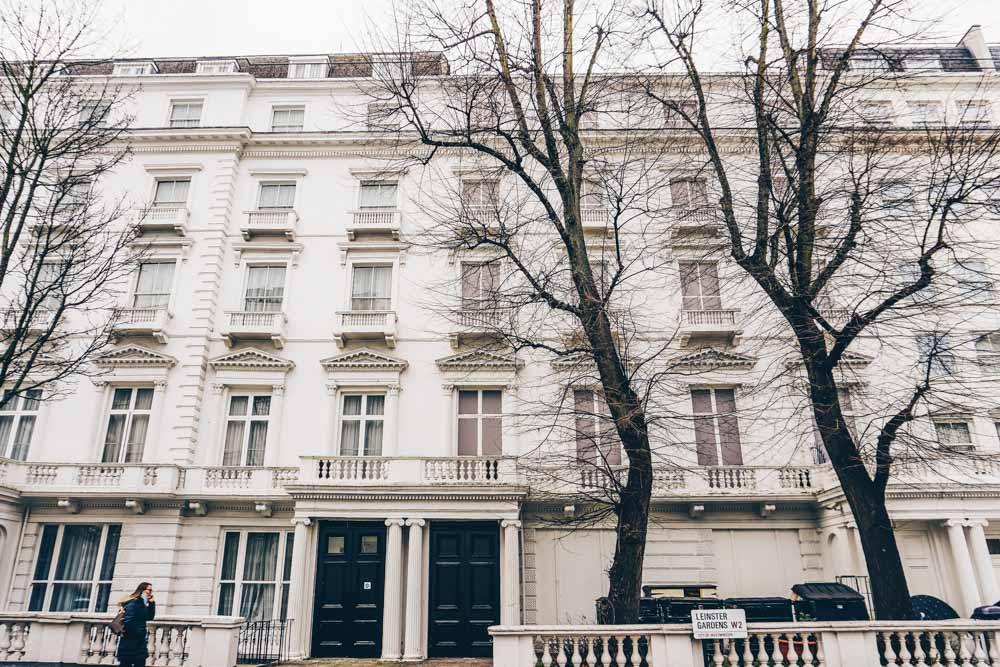
These houses look completely normal right? Nothing to see here.
Look again.
The fake houses of Leinster Gardens in Bayswater are one of the more obscure things to see in London – largely because they’re so difficult to spot.
The story goes that two houses were demolished to create an air vent for the Metropolitan Line, which was being constructed at the time.
As you can imagine, the local residents were furious. They demanded that two fake facades were built to cover up the unsightly gap.. and so the fake houses were born.
Over the years, the houses have seen more than their fair share of scandal – in the 1930s a con man sold tickets to a ball in the houses, and it was only when the guests turned up that they realised they’d been duped.
The houses also pop up in much-loved detective drama Sherlock.
Go Wild in a Ball Pit Cocktail Bar London
Shoreditch

We used to think we were the only ones who looked back with a touch of nostalgia and longing for those heady hours spent in the ball pit during our childhoods. Apparently not – ball-pit bars are one of the quirky London crazes du jour.
While there are many bars scattered around the capital where you can drink alcohol and throw yourself with gleeful abandon into a pit of plastic balls – Ballie Ballerson in Shoreditch is the original and the best.
You can buy tickets in advance on their website (which, incidentally is smattered with tongue-in-cheek references to playing with their balls). Naughty.
Take an Urban Adventure
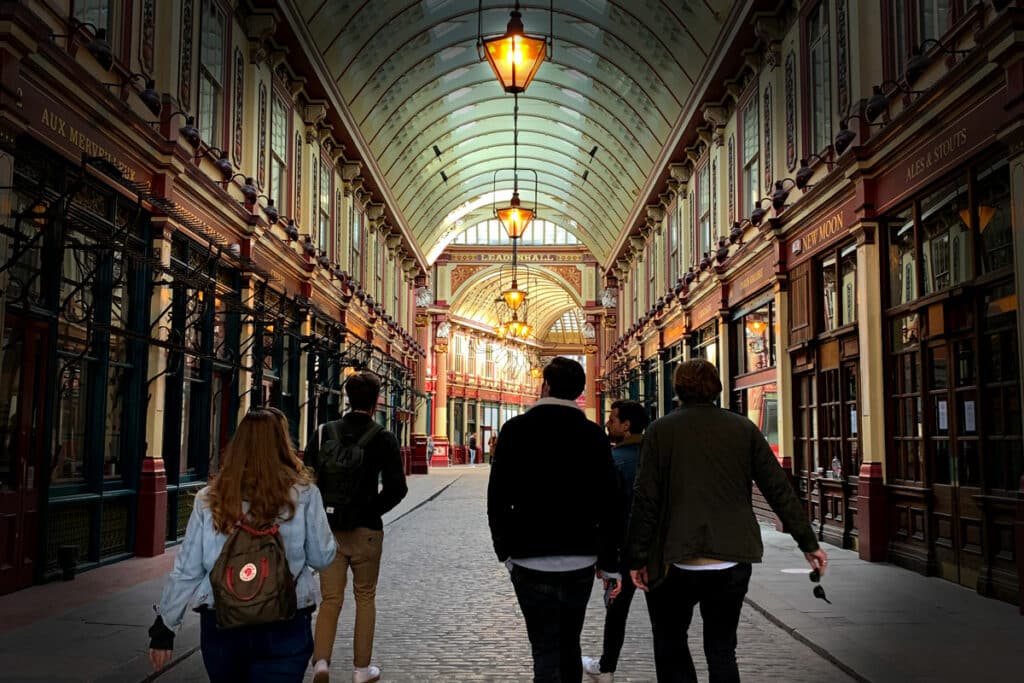
Looking to explore London? CityDays offers a pretty unique way of discovering London’s fun side. It’s probably best described as an interactive treasure hunt crossed with an outdoor escape room. What does that look like?
Well, they’ll line up an interactive mystery walk for you, shooting clues to your phone as you run around London trying to solve puzzles and discover hidden sides to the city. It doesn’t require any prior knowledge but it does require a little teamwork.
Whether it’s just two of you, a bunch of your pals or a day out for an office team building you’ve got ten different routes to choose from, each focussed on discovering a different area of London and telling a different story about the city’s past and present.
Each route is about 5km long and should take about two and a half hours to complete. In one you’ll explore Kensington’s beautiful and mysterious mews, in another you’ll follow in the footsteps of Jack the Ripper. Fancy tracing the City of London right back to the Romans. You can do that too.
Or Visit Leighton House
Kensington
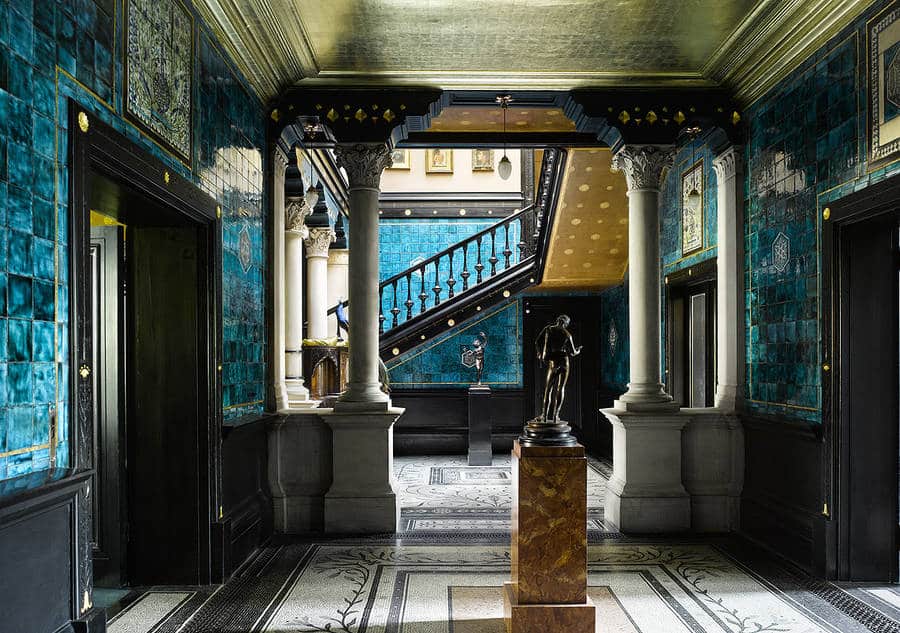
Image Courtesy of Will Pryce
The Narcissus Hall © Leighton House Museum, RBKC.
Image Courtesy of Will Pryce
Fabulous, opulent and verging on the bizarre, Leighton House is one of those places that could have only belonged to a grand old British eccentric.
That eccentric was Frederick Lord Leighton and Leighton House, built in 1866, his private studio-cum-home.
Lord Leighton was an artist – at the time the house was built he was an associate of the Royal Academy, and he rose to become its president before his death.
He wanted Leighton House to be both somewhere he could work and somewhere he could showcase his extensive art collection, curated from the work of his contemporaries.
The result is a stunning palace of art and design – resplendent in rich colours, created from materials sourced from all over the world – and one of London’s most beautiful interiors.
Read more: 150+ Things to do in London: The Ultimate London Bucket List
Be Enchanted by Brixton Windmill
Brixton
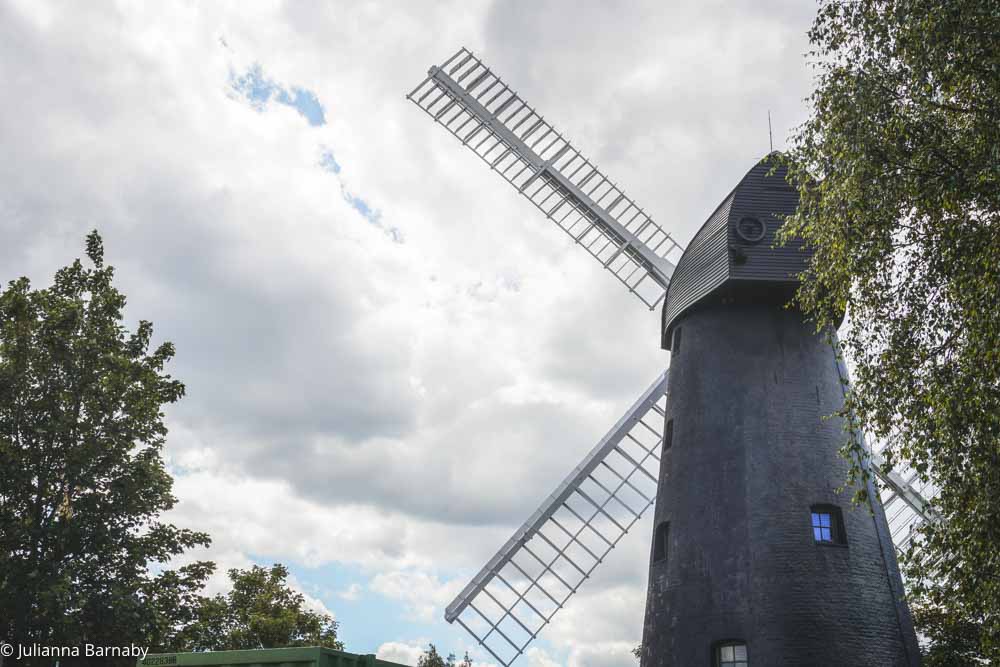
Once upon a time, South London was a rural area – a patchwork of farms, woods and clean, wholesome air. While those days are long gone, finding and visiting the bits that remain is one of the more unusual things you can do in London.
Did you know that there’s a windmill in Brixton? The windmill – an old flour mill dating from 1816 – sits in the shadow of Brixton Prison.
Recent restorations mean that the mill is fully functioning – you can even take tours during certain times of the year, depending on the mill’s open days.
Read Next: Unmissable Things to do in Brixton
Adventure On The Dare Skywalk
Tottenham
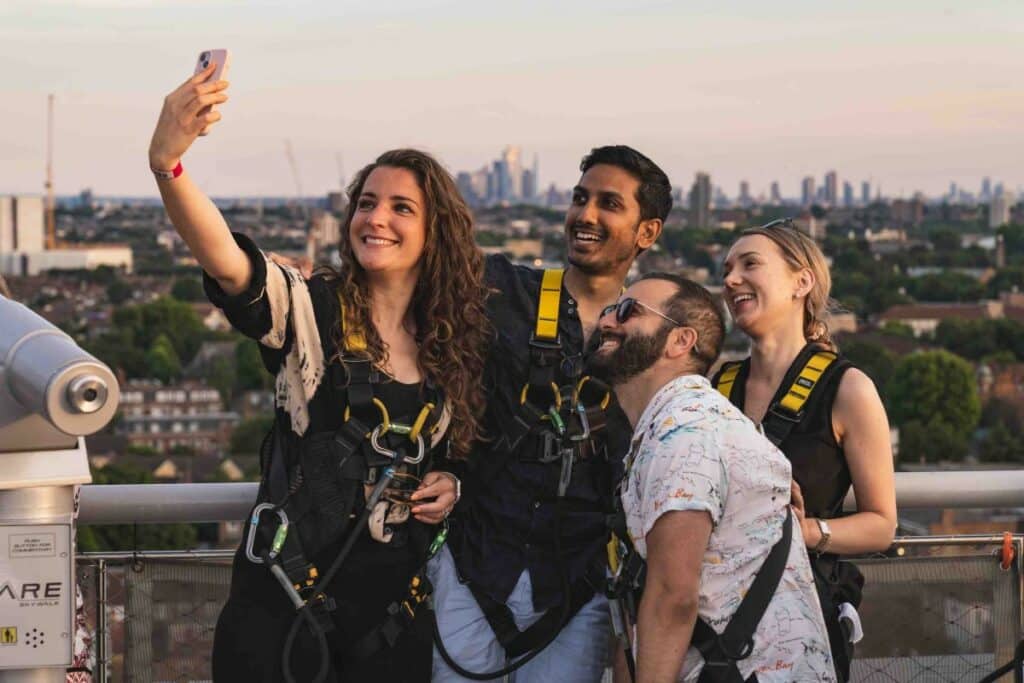
Ready for an ultra-fun adventure in London? Tackle The Dare Skywalk and climb to the very top of Tottenham Hotspur’s Stadium. It’s one of the most unusual things to do in London and the views from above are well worth it.
Once you’re clipped in, you’ll be led up 100 steps towards the glass apex – a whopping 46.8 metres above the pitch. From here you’ll be greeted with views of the London cityscape and the stadium bowl below.
Make sure to keep your eyes peeled for the famous Golden Cockerel that overlooks the city – he’s even more magnificent up close!
Tickets start from £31 with discounts available for club members and kids – book yours here.
Take a Backstage Tour of the National Theatre
The Southbank
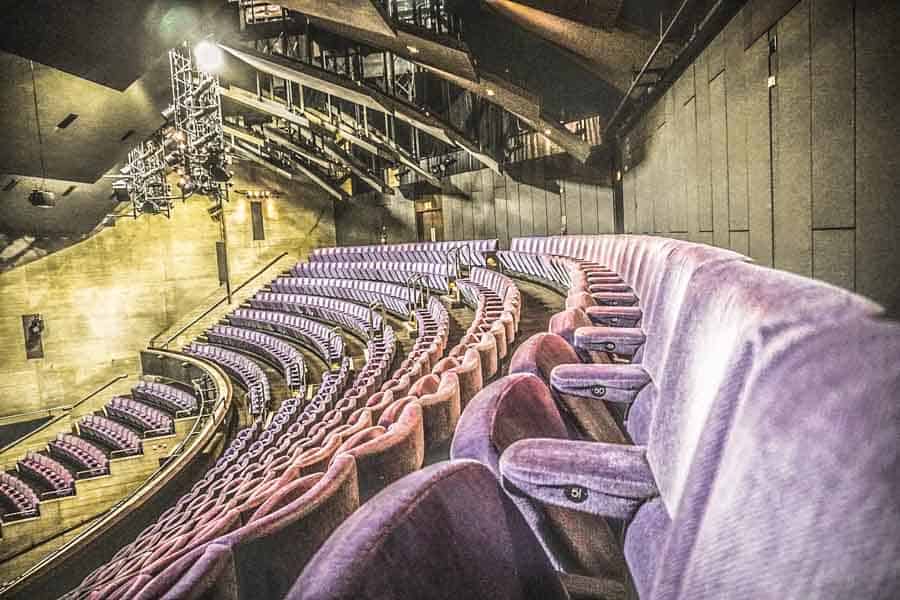
We’ve all heard of The National Theatre right? We’ve snuggled into the comfy seats and watched the plays (if you haven’t, you should – The National puts on some of the best plays in town and tickets are totally reasonable), then toddled off home.
But what if you could do more… What if you could take a peek behind the scenes to learn about the history of the theatre and learn about how a play actually gets onto the stage?
Well, turns out that you can. The National Theatre’s backstage tours are the perfect way to get an insider’s look at the stages, sets, props and costumes that make each play what it is.
Watch the Archives in the British Film Institute’s Mediatheque
The Southbank
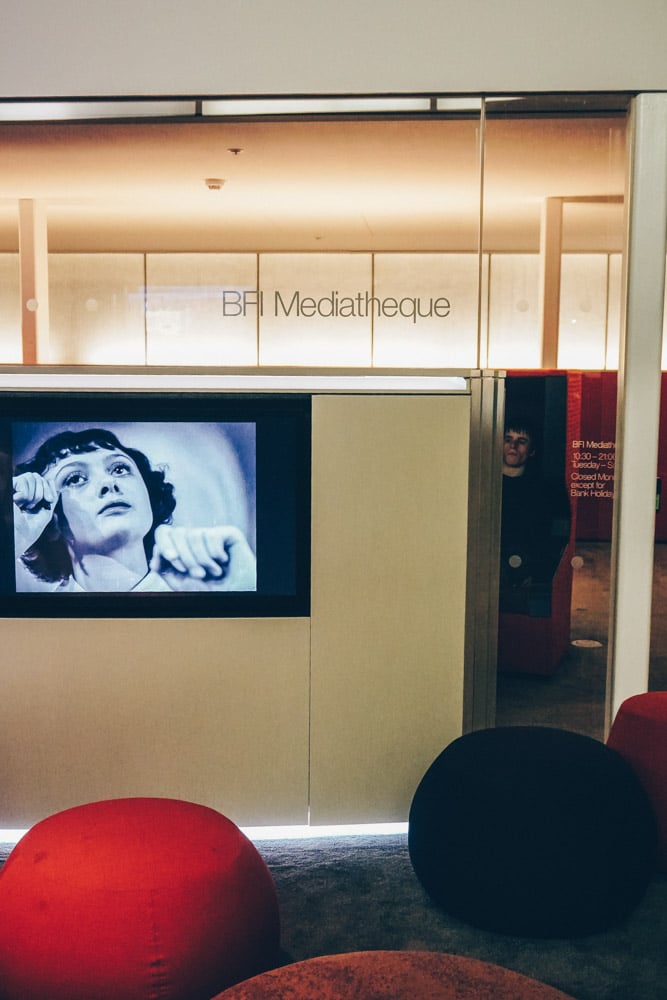
Got a few hours to spare and want to settle in and watch something a bit different?
Head to the BFI’s cool little Mediatheque at the BFI Southbank.
The BFI is one of our favourite places to visit on the South Bank. The Mediatheque contains a number of private booths, each with its own screen, headphone jack and speakers, where you can access all of the digitised BFI National Archive.
As you’d imagine, the archive is vast – you can feast on Dracula film after Dracula film, through period dramas, old classics, silent films – all for free.
Last time we went down there we plumped for an old version of Wuthering Heights with Timothy Dalton – because vintage 70s period dramas is where it’s at.
To find the mediatheque, just pop into the BFI and it’s right behind the ticket desk.
Visit the Bascule Chamber in Tower Bridge
Tower Hamlets
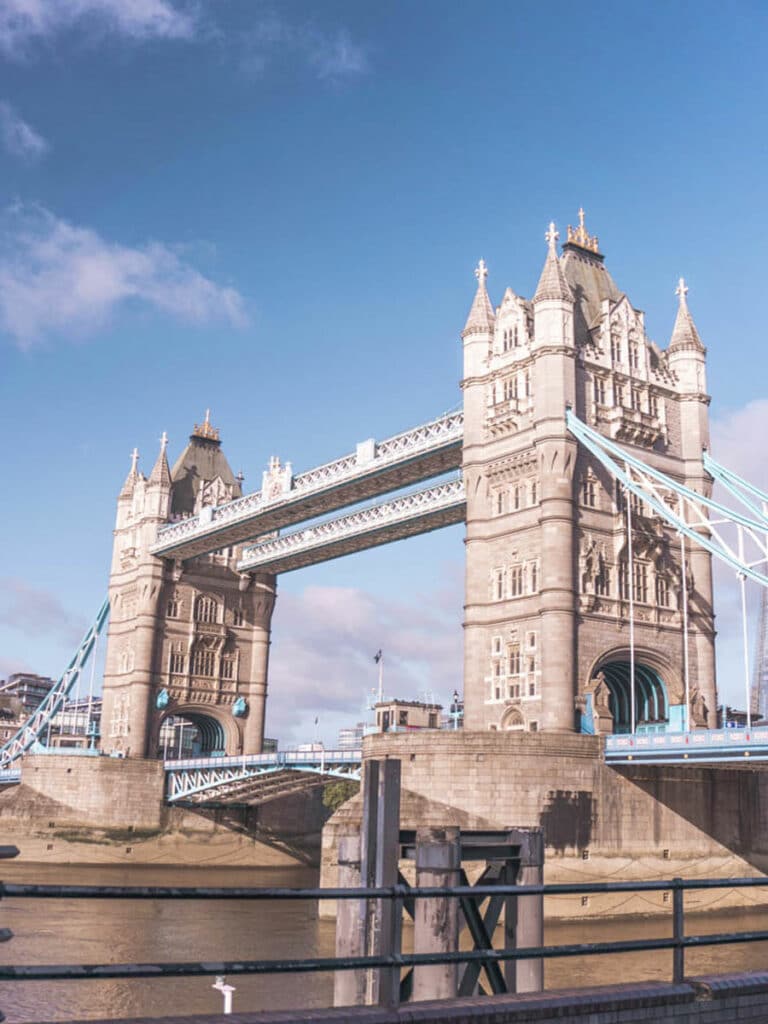
Tower Bridge. We can literally feel you rolling your eyes. It’s safe to say that Tower Bridge is not at all off the beaten track in London. It’s at the top of any tourist itinerary for the city and is one of the most photographed spots in town.
But deep within the bridge’s bowels, there’s a secret chamber. A secret chamber! It’s one of the many facts and stories about Tower Bridge that few people know about.
The Bascule Chamber is a cavernous space that is situated beneath the bridge’s towers – the huge counterweights swing into the chamber when the bridge opens, but the rest of the time this cave beneath the river sits empty.
Sounds incredible! Sign us up! Unfortunately, the Bascule Chamber can only be accessed as part of the Tower Bridge Behind the Scenes Tour (which costs an eye-watering £75) or as part of the Bascule Chamber Concerts (these tend to be held in the summer – keep an eye on the website for details when summer approaches).
Peek at the Street Art in Croydon
Croydon
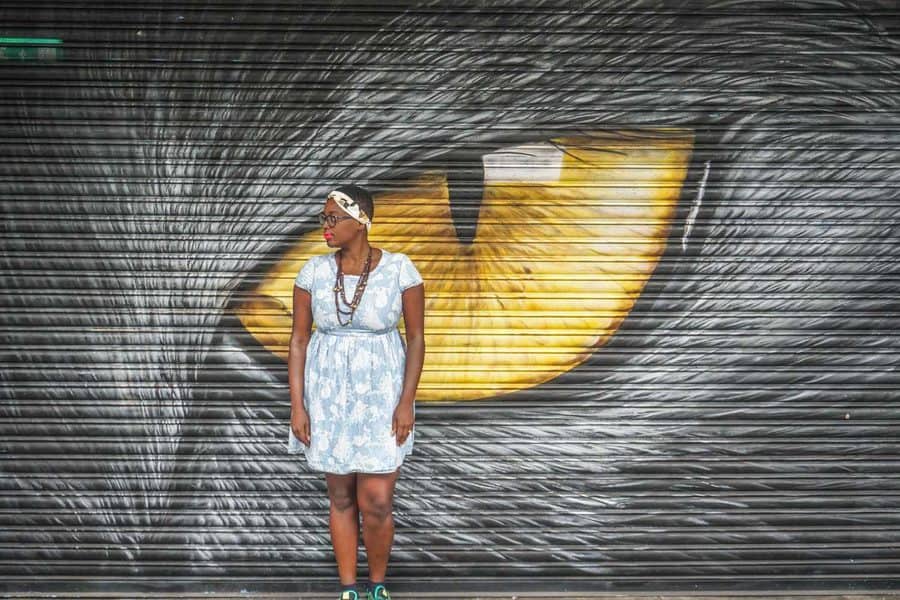
A slow revolution has been taking place in Croydon in the past few years.
An area once known for ugly architecture, the riots and the Croydon facelift (a hairstyle where your hair is scraped back so tightly that your face retreats at least 2 cm upwards), has been quietly creating its own little scene of cool and quirky things to do in London.
We’ll be upfront, we’ve got a Croydon gal on our team and so there might be a touch of bias here, but we reckon Croydon might be one of the most underrated spots to explore London’s street art scene.
Much of the neighbourhood’s street art revolution has come about since Rise Gallery’s RISEfestival in 2018 which saw huge international names such as Otto Schade, Dotmasters, Hayley Welsh and David Hollier adorn Croydon’s walls.
Since then the collection has grown and much has changed with some of our new favourite street art pieces taking pride of place on Croydon’s walls. It’s well worth checking out. To do so just head into the centre of town to take a look on the fly, you can’t miss the works, many of them take up the side of whole buildings.
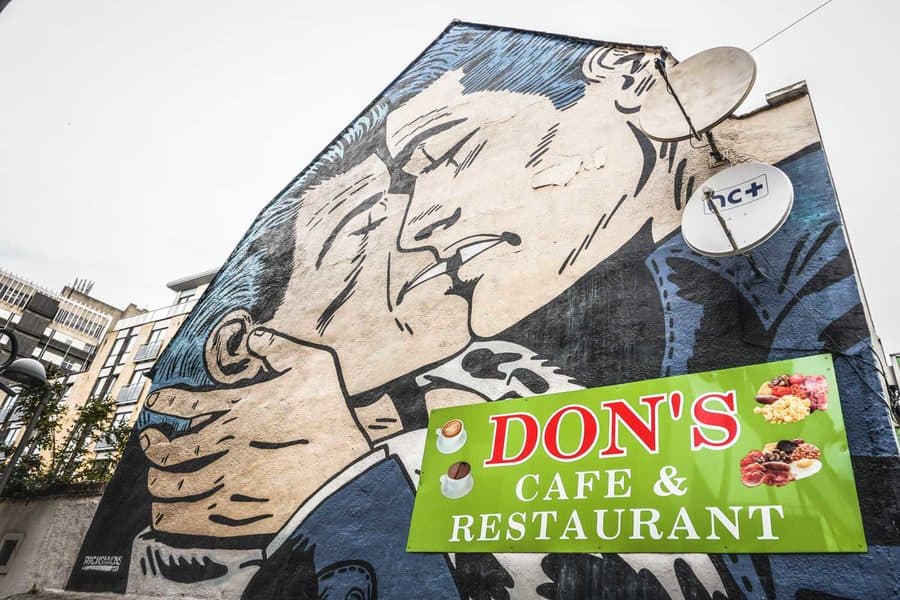
Read more: Street Art in Shoreditch
Visit London’s Smallest Listed Buildings
Piccadilly
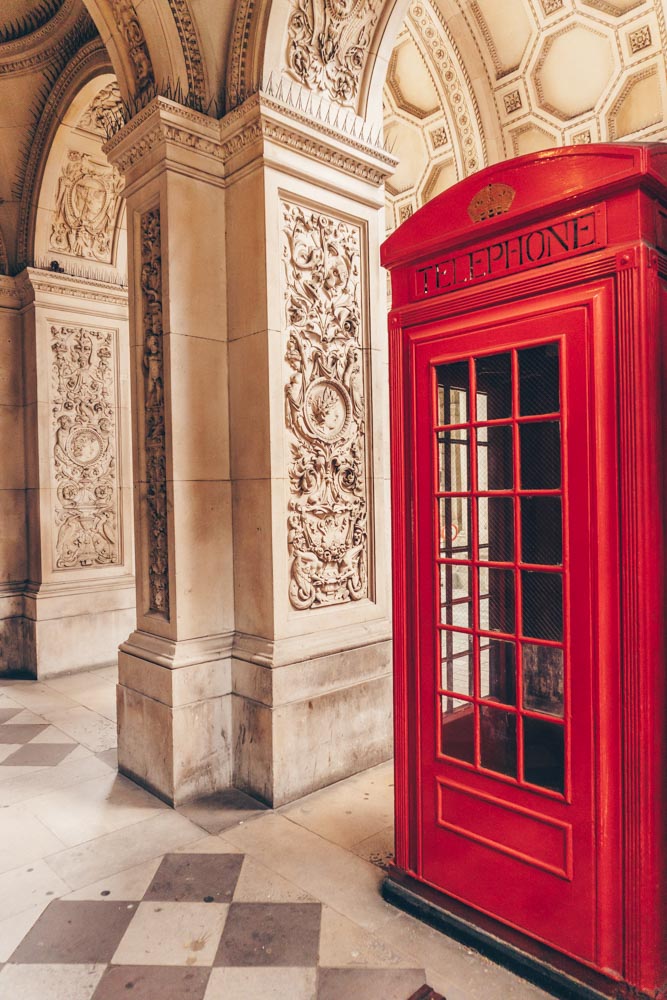
London has heaps of listed buildings. It’s kind of to be expected when you have a city as old as this. It’s the city’s smallest listed buildings that we love best though.
They come in the form of a pair of K2 Telephone Boxes tucked into the grand entrance to the Royal Academy. They’re the original prototypes of the phone box that went on to be a true British icon.
One is made of wood and the other cast iron and together they won designer Gilbert Scott the competition organised to find the new model. That was all the way back in 1924 and now there aren’t many K2 boxes left in London, which also makes this a good place to get a blast from the past.
Visit the Marx Memorial Library
Clerkenwell
Contemporary London isn’t exactly a bastion of communism. It’s safe to say that anywhere you have to pay £5 for a small coffee has strayed far from the communist manifesto. But there are small pockets that continue to pay tribute to the resistance if you know where to look.
The Marx Memorial Library, in leafy Clerkenwell, is one such place. The library pays tribute to the city’s past affinity for political rebels with a collection of over 150,000 pieces of left-wing literature.
They also hold semi-regular talks (called symposiums here) and events like book launches if that tickles your fancy. You can find more information about those on their website.
Visit the Cinema Museum
Elephant and Castle
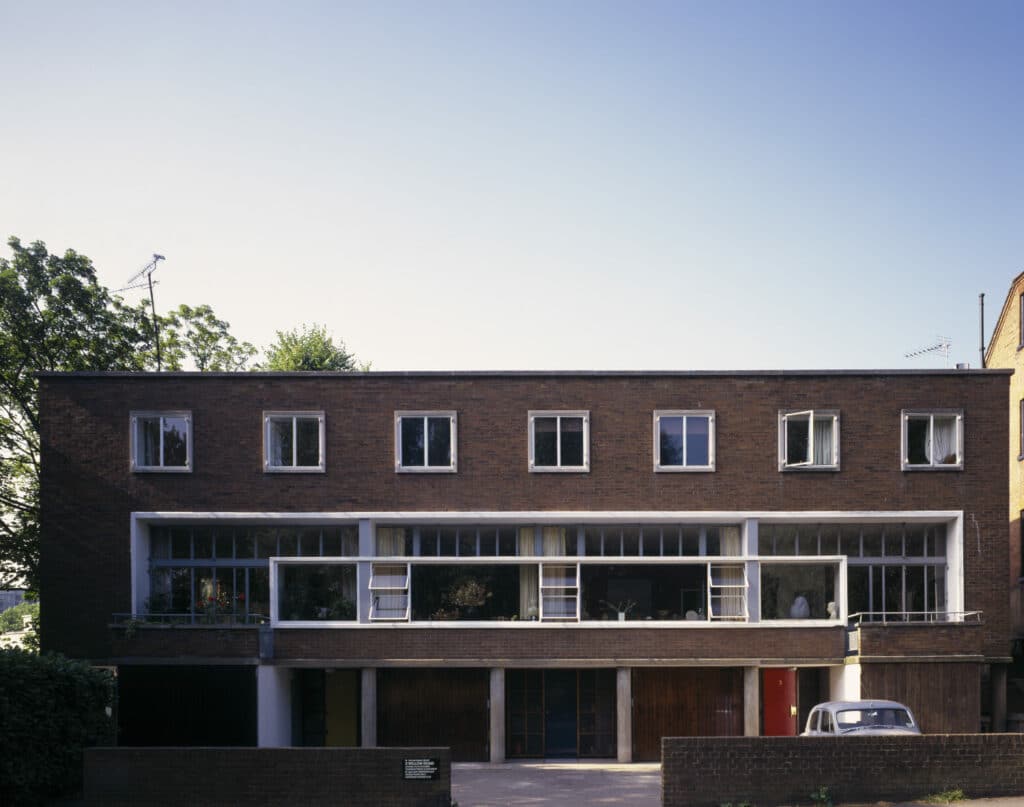
Tucked away in South London, the Cinema Museum is one of those unusual places in London you’ll wish that you had discovered sooner. Put simply, the Cinema Museum is a treasure trove of images and items from the film world.
Any and everything relating to the cinema makes an appearance – thanks to collector and founder Robert Grant’s tireless passion for film.
Over the years, Grant has built his collection into the quirky emporium that we see today: corridor after corridor of film reels, scores, props and stills. Visiting is one of those quirky experiences that isn’t quite what you expected – but so much better.
See the Perfect Modernist Show Home
Hampstead
2 Willow Road is famed for being the modernist masterpiece of master architect Ernö Goldfinger. It’s not some grand structure, more like a humble, paired-back bit of red-brick building.
It does, however, represent a bit of a revolution in British architecture, pushing the boundaries of Modernist design in ways that were quite shocking to people of the time. Interestingly enough, Ian Flemming hated Goldfinger’s work, the reason he lifted the man’s name and gave it to Bond’s nemesis in Goldfinger.
We’re thoroughly on board with the style of this place though. It seems to us to be incredibly sophisticated, even decades later. We’ll let you be your own judge though.
Visit the Ghost Stations of the London Underground
Mutliple location (But especially Aldwych)
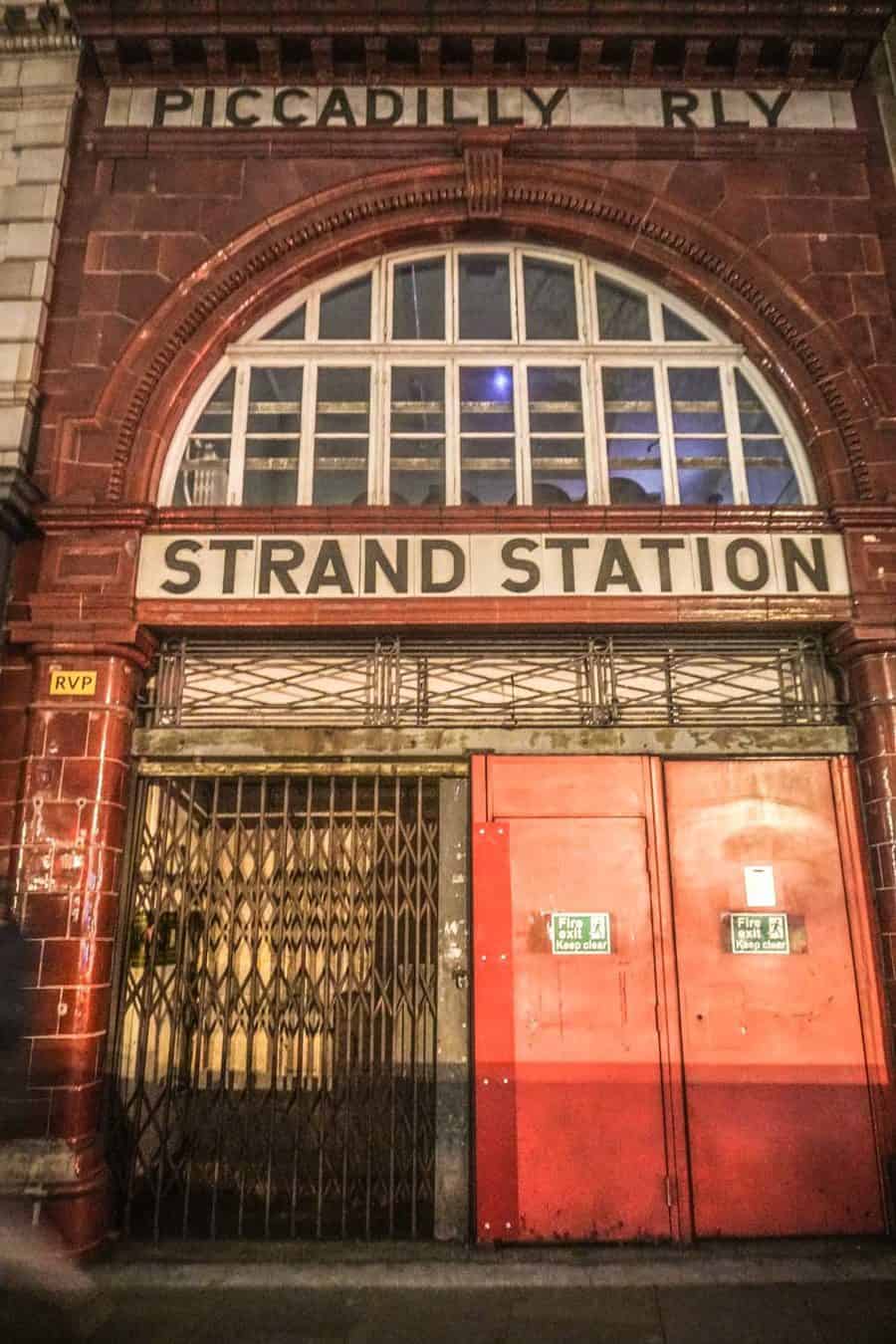
Given that the tube was constructed in the 19th century it makes sense that there have been a few changes to the network over the years.
As time has passed, stations have been closed or repurposed – meaning that if you keep your eyes open, you can spot more than a few of the so-called “Ghost Stations” of the London Underground.
Of these unusual London attractions, the most central is the former Aldwych Underground Station at the end of The Strand. The station sits forlornly, a few paces away from Somerset House.
London Transport Museum host tours of the station from time to time – giving visitors a look at the historic (and slightly creepy) interiors.
Head to the Spot where the Brownings had their Illicit Marriage
Marylebone
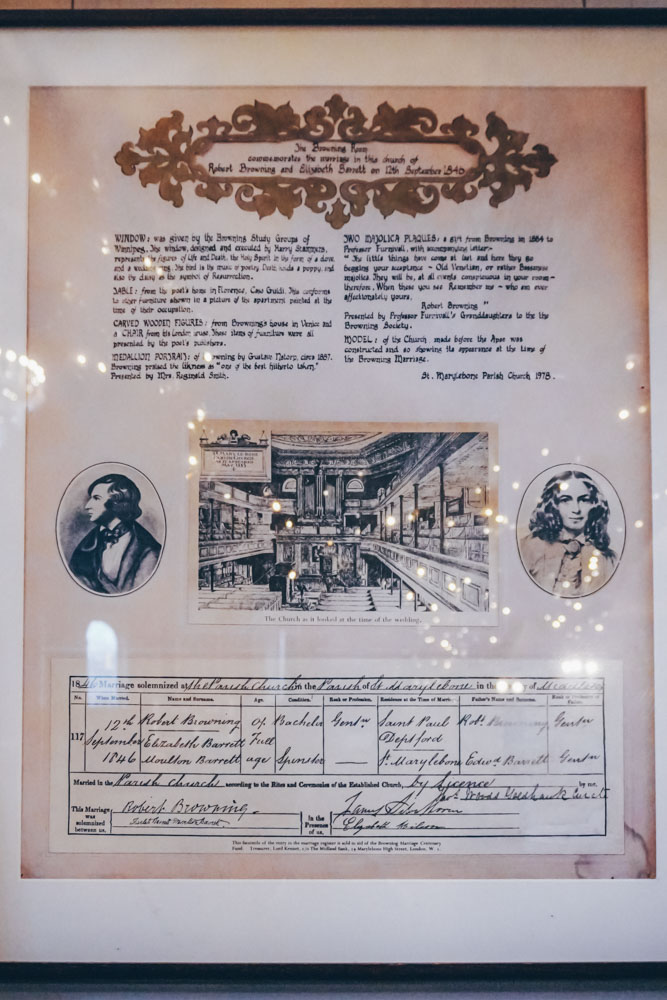
It was the love affair of the century. She was a Romantic poet, an invalid and a recluse, housebound and governed by a tyrannical father. He was an up-and-coming poet (later to become one of the most eminent poets of the Victorian period).
They fell in love, her father banned the relationship, so they eloped, getting married in St Marylebone Church near to her house and then running away to Italy. The story of Elizabeth Barrett Browning and Robert Browning sounds like something straight out of a fairytale.
You can visit the room in the church where the two married by appointment. There’s a stained glass window commemorating the event and a copy of their marriage certificate too.
Read More: Romantic Things to do in London
Be Charmed by a Sewage Pumping Station (Yes, Really)
Crossness
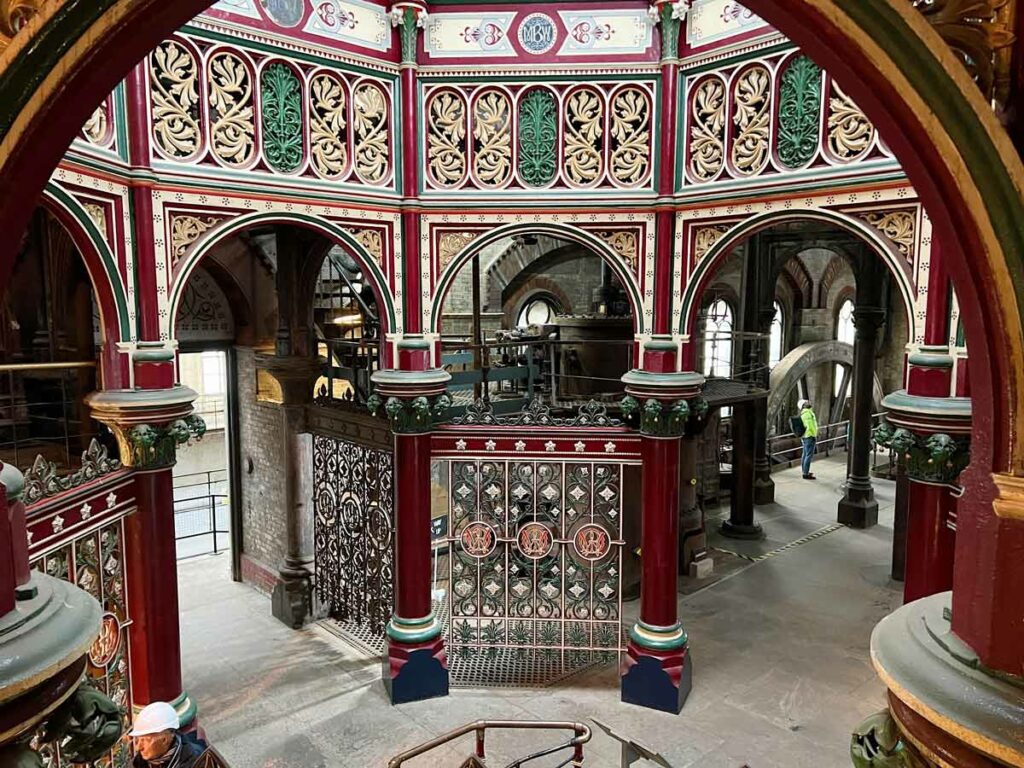
We’re well aware that a sewage pumping station doesn’t sound like the kind of place you might be charmed, but that’s because you’ve not seen the inside of Crossness Pumping Station.
The building was designed in the Victorian era (you know how the Victorians were for flare) and boasts an incredibly ornate design of wrought iron and vivid colouring. No kidding, the word ‘cathedral’ gets thrown around a lot in relation to this place. It’s very grand.
You can visit the pumping station on a guided tour that runs a couple of times a month. Check their calendar here for the next outings.
Take a Good Look at the Lions of Trafalgar Square
Trafalgar Square
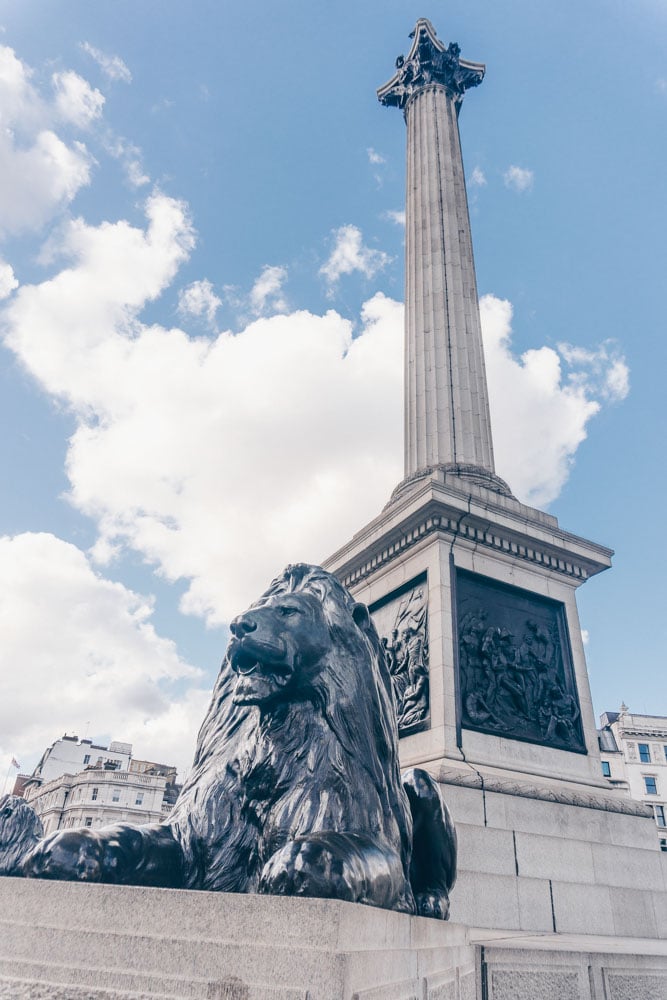
There’s barely a person who has visited London that hasn’t been to Trafalgar Square.
The four lions, sitting towards the front of the square are pretty famous in themselves – not to mention subject to a never-ending stream of prancing, posing airheads seemingly incapable of obeying the sign telling them not to climb on them.
So why have we included the Trafalgar Square lions in our guide? Because for all their fame, few people ever really look closely at the lions. If they did, they’d start to think they looked a bit strange.
No wonder, when you hear the story behind them.
The lions were created by Sir Edwin Landseer, a painter who, prior to starting the lions, had never sculpted in his life.
Landseer requested a dead lion from London Zoo to use a study for the sculptures – unfortunately, it started to rot away before he’d finished them. That’s why they have the paws of a cat – in truth, their faces look a bit odd too. Take a close look the next time you visit.
Marvel at an Art Deco Palace
Eltham
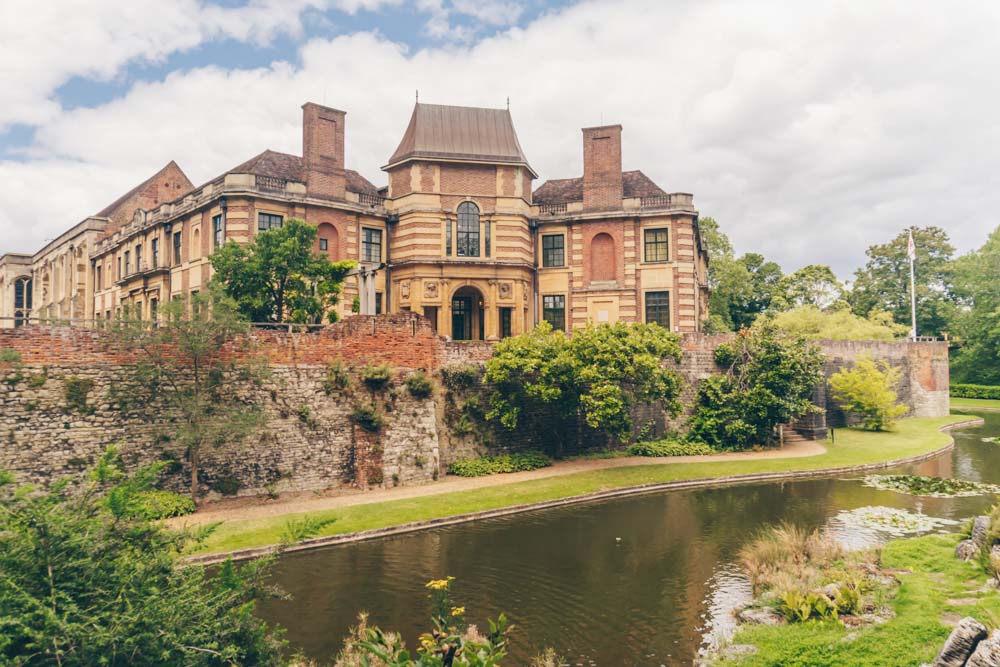
When you think of the palaces of London you tend to think of the ornate rococo of places like Buckingham Palace, or the grandeur of Hampton Court.
Eltham Palace offers something totally different. It has been the site of royal courts since the 1400s but fell into disrepair after the kings of England fell out of love with Eltham and started hanging out elsewhere.
Then, in 1933, the palace came into the hands of a pair of wealthy socialites, Stephen and Virginia Courtauld. They gave it an entirely new facelift in the style of the day: Art Deco. The result is stunning. We thoroughly recommend you give it a look.
Walk Alongside the Old London Wall
Barbican
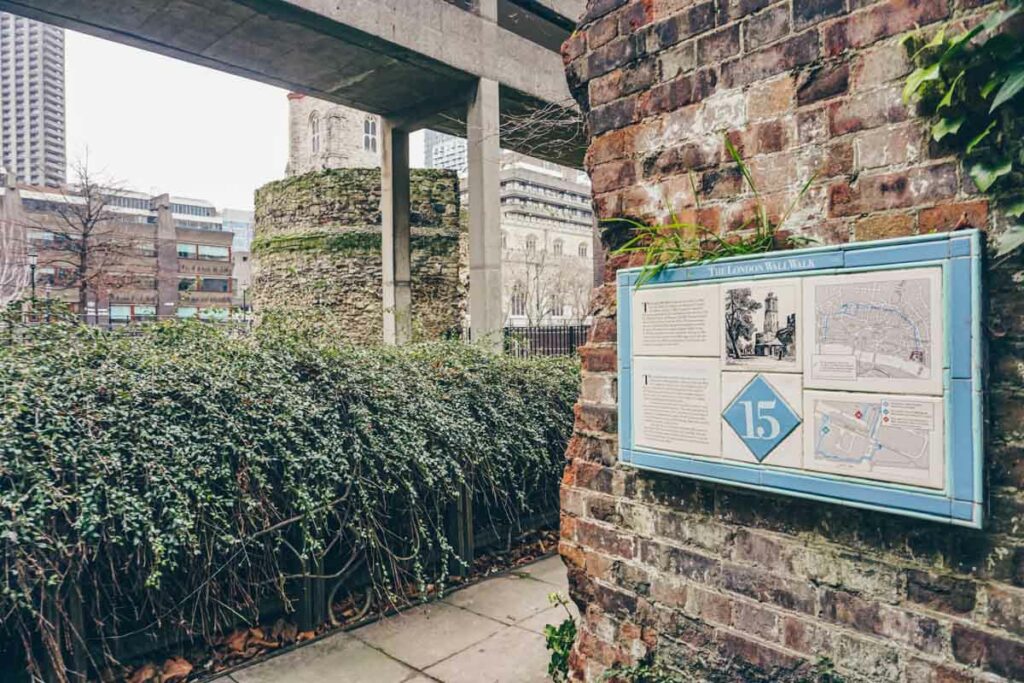
First built by the Romans around the settlement of Londinium and maintained until the 18th century, you can still spot parts of the old London Wall popping up in various parts of the City of London between the Barbican and Tower Hill.
The section between what was the Museum of London and the Barbican is our favourite – thanks to the small patch of parkland and gardens surrounding it – it’s a rare quiet spot in the heart of the city.
Read More: Cool (and Free!) Museums in London
Visit God’s Own Junkyard
Walthamstow
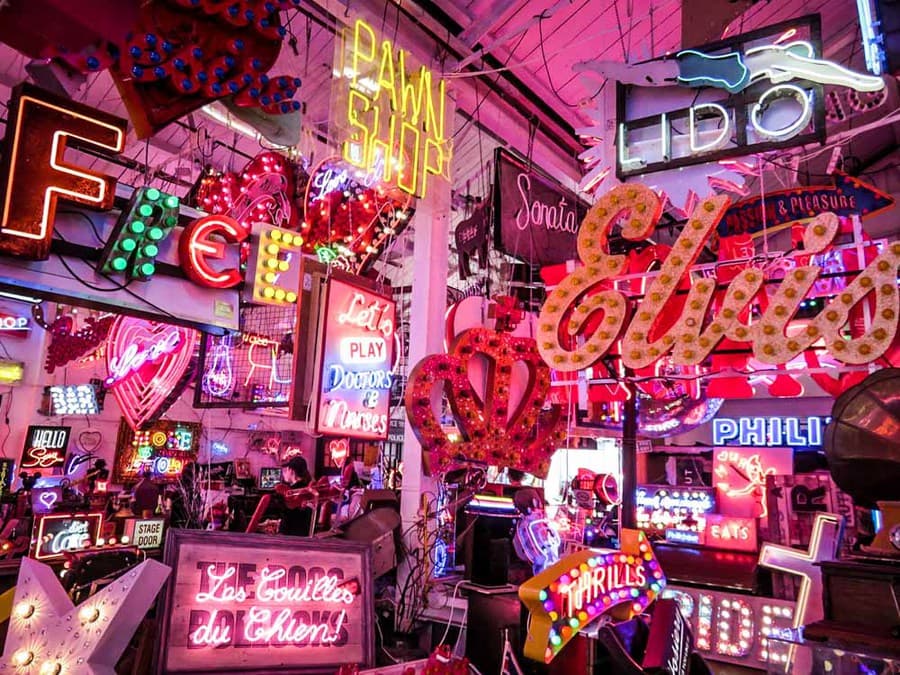
Neon, neon everywhere. In deepest, darkest Walthamstow lies a quirky place that’s bound to light up your day – God’s Own Junkyard.
A private collection of all things neon – curated by the late Christopher Bracey, it’s like walking into a film set.
Bracey, otherwise known as the Neon Man, was a second-generation neon signmaker who collected pieces throughout the decades.
The result is one hell of a quirky experience. Once you’ve finished admiring all the work, be sure to settle in for a cuppa at the stellar on-site cafe.
Explore the Museum of Brands
Notting Hill
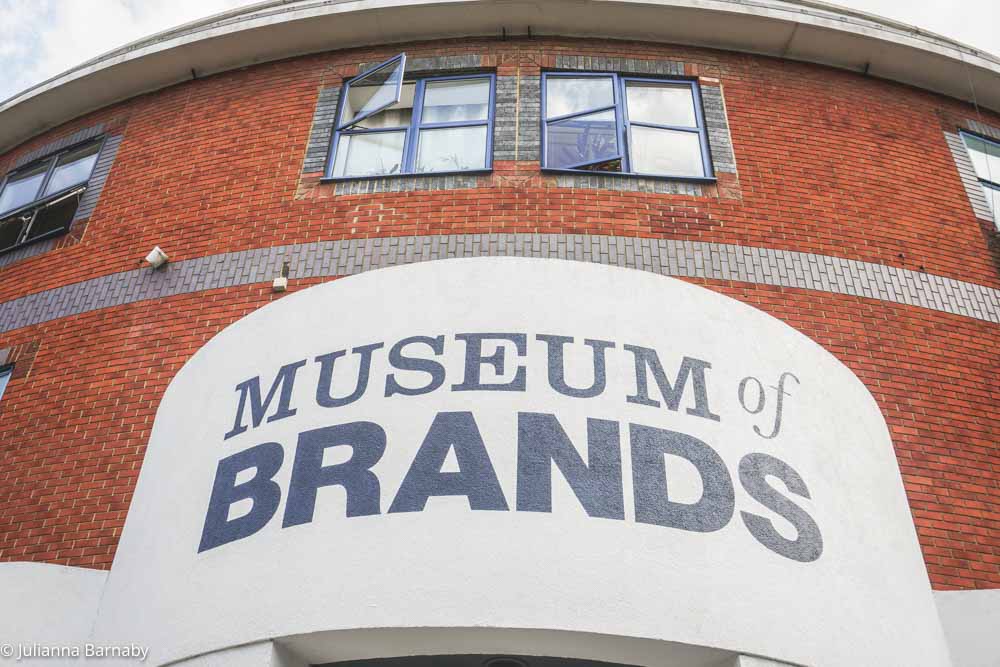
London’s got more quirky museums than you’d imagine. One that really took us by surprise is the Museum of Brands.
It’s pretty much exactly what it says on the tin, a museum that showcases branding throughout the ages. It’s sort of a time warp. They have loads to see and they dress it all up with a good bit of historical context.
We’d highly recommend this for anyone that’s got an eye for design or perhaps a job in advertising.
Visit the Institute of Making
Bloomsbury
A research club and makerspace run by UCL, The Institute of Making offers all kinds of unique things to do in London.
While the space is reserved for UCL’s students and staff, the Institute of Making runs a programme of maker workshops that are open to the public.
Dabble at making your own Christmas decorations or create your own Roman mosaic – check the listings and book well ahead.
Catch a Show at Wilton’s Music Hall
Shadwell
Wilton’s Music Hall first opened in 1859 with the goal of providing the glamour and showmanship of the West End stage to the people of the East End.
It’s still going strong on exactly those principles, providing shows that are well worth catching. They don’t run a massive budget like their West End competitors so the stuff they get on stage has a charmingly grassroots feel – it also means the tickets won’t break the bank.
Go Stargazing at the Royal Observatory
Greenwich
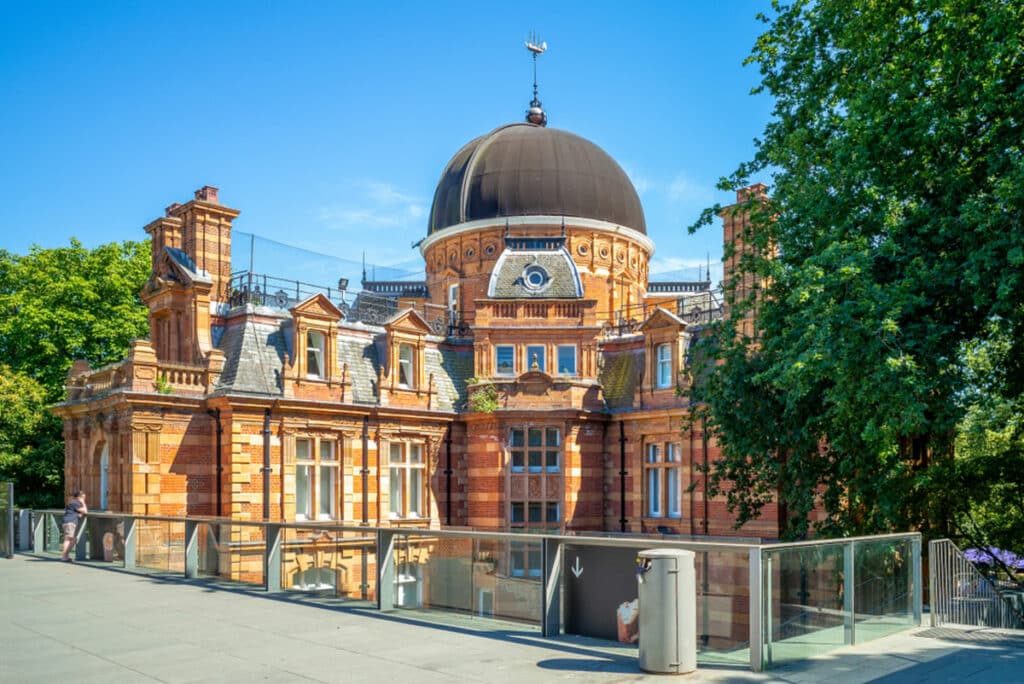
There’s nothing like a trip to outer space for something unusual to do… You can find quite the astrological journey at Greenwich’s Royal Observatory.
The place dates back to 1675 and was built under the order of Charles II. A lot has changed since then, mainly the addition of a planetarium – the object of your visit.
With daily shows ranging from trips across the surface of Mars to understanding the night sky as it is on the day you’re visiting, it’s nothing if not fascinating, and we’ll throw in pretty beautiful too.
Step Back in Time at the Dennis Severs’ House
Spitalfields
Ever so slightly wacky, visiting the Dennis Severs House is one of the more unusual ways to spend a day out in London.
The house is an artistic recreation of the life of a Huguenot weavers family from the 18th to the 20th centuries.
A series of still-life recreations, each meticulously brought to life in the rooms of 18 Folgate Street – you walk through the house and through the lives of generation after generation of the fictional family.
The place is a feast for the eyes, with period furniture and a baffling array of trinkets and Huguenot floral patterns on pretty much every wall. We doubt you’ll have seen anything like it before.
Take a Turn Around the Streatham Rookery
Streatham
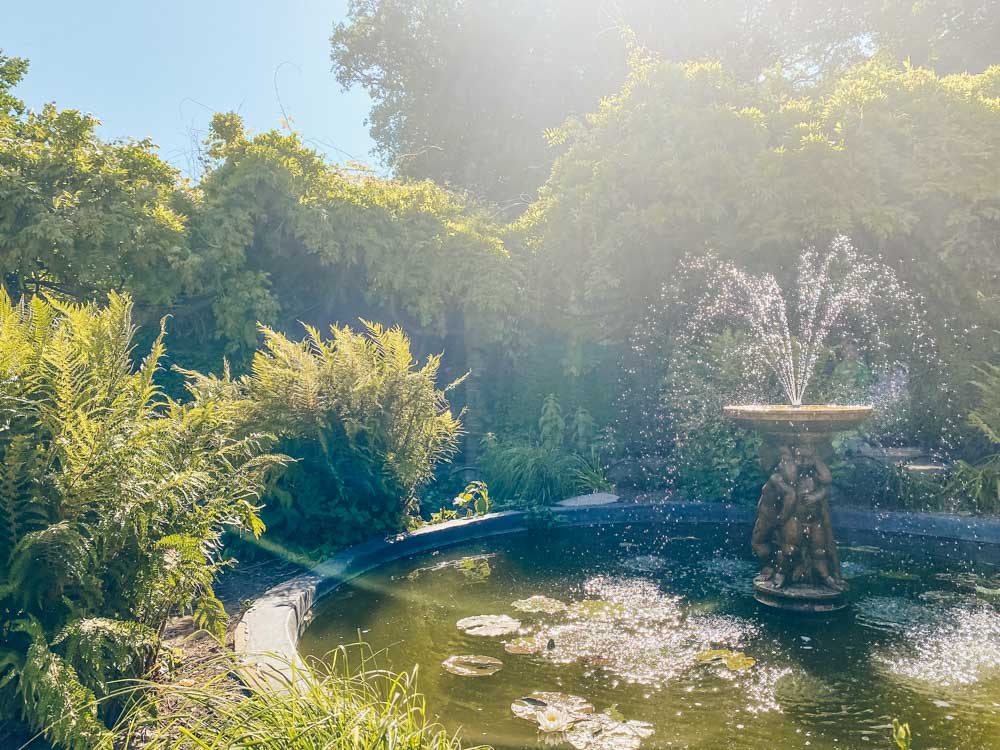
If you’re looking to find a hidden slither of peace in the busy city, how about a stroll around a secret garden?
Streatham Rookery offers exactly that. It’s a series of gardens that’ve been lovingly tended to for over a hundred years. Its site was once (believe it or not) a spa.
Strolling through the charming gardens you’ll even be walking in the footsteps of royalty. Queen Mary, consort of George V, is said to have loved the gardens dearly and often came here for her walks.
Visit a Country House in the City
Hampstead
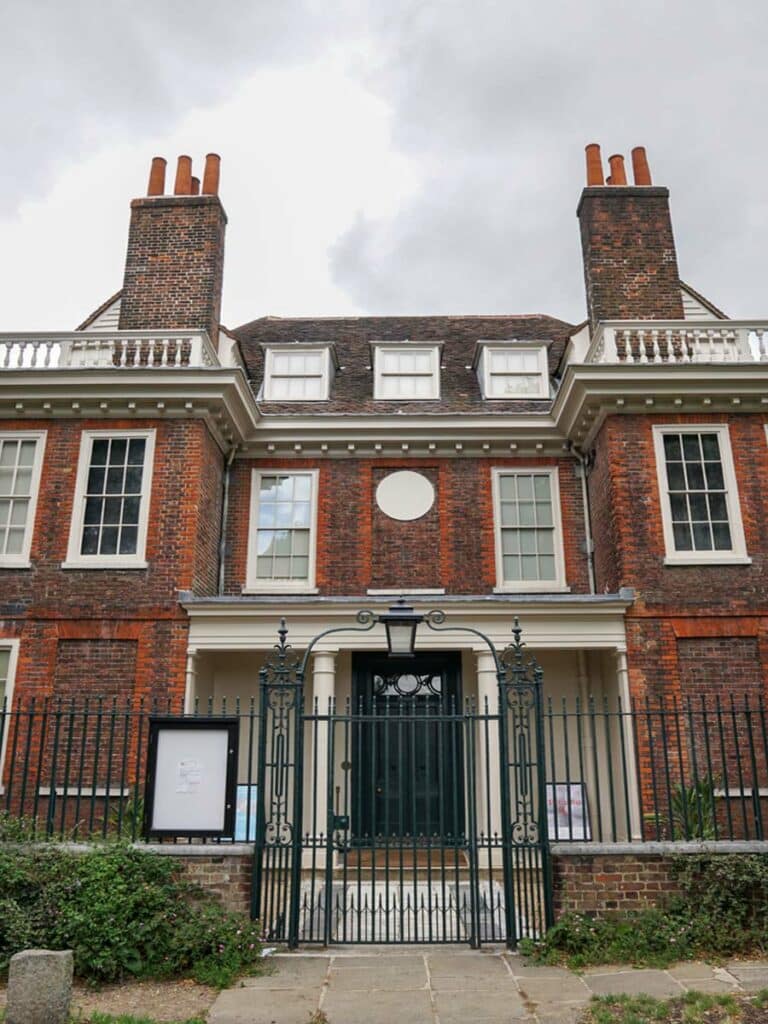
We love a day exploring London’s National Trust properties for something a bit different to do. Hampstead’s Fenton House would be one of our top picks if you’re thinking the same way.
The grand house resembles something closer to a stately country home than it does a London residence, but then again it was owned by the 2nd Earl of Haddington – someone we’re sure wasn’t short a quid or two.
His wife, Lady Binning left a charming touch on the house and its gardens and then handed it over to the National Trust in her will. They’ve kept it almost exactly how she left it.
Walking the corridors is like stepping into another world. We’re not going to pretend we didn’t imagine ourselves as a set of earls, dukes and duchesses when we visited.
Visit The Petrie Museum of Egyptian Archaeology
Bloomsbury
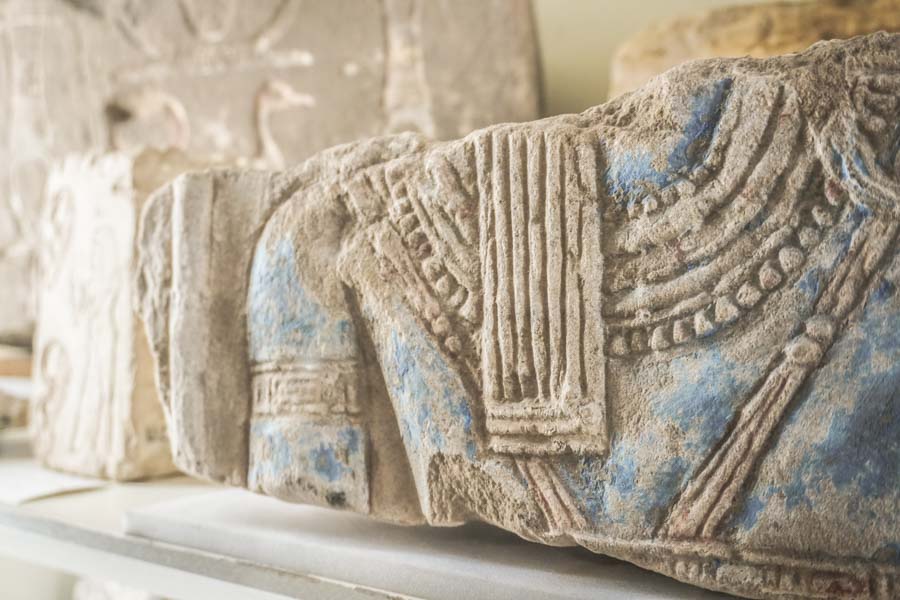
The Petrie Museum of Egyptian Archaeology is another UCL gem tucked away in Bloomsbury.
With over 80,000 objects displayed within its rather small space – it’s a full-blown immersion into the world of the ancient Egyptians.
From the world’s oldest dress to pyramid texts and beautifully engraved ceramics, The Petrie offers a glimpse into a civilisation past (and on a much more manageable scale than the nearby British Museum too).
Read More: Visiting the Petrie Museum of Egyptian Archaeology
Go to a Magic Show and Visit the Magic Circle Museum
Euston
There’s nothing quite like the thrill of a magic show. Sadly, these days good magic shows are few and far between.. Until you head to The Magic Circle that is. The circle is a society of some of the world’s best magicians and illusionists.
You’ll be happy to hear that they frequently host top-class shows that make for a much cooler alternative to a night in the pub.
There’s even a museum – though it’s only accessible with a ticket to one of the shows. It’s well worth a visit. There’s also no public access to the building at other times so buckle up and prepare to have your mind blown.
Take the Parkland Walk
Finsbury Park, Muswell Hill
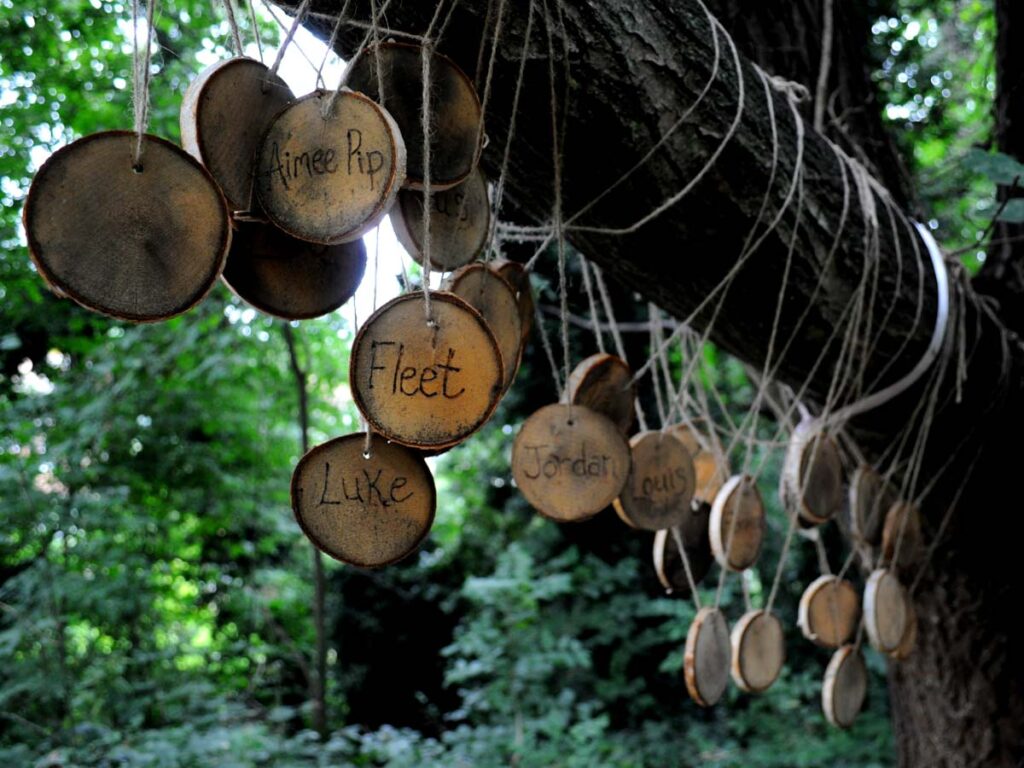
Living in the concrete jungle can get a bit much sometimes. It’s good to take in a little nature once in a while. Parkland Walk makes the perfect place for exactly a bit of that.
It’s London’s longest nature trail, stretching a mild 3.1 miles from Finsbury Park to Muswell Hill. The walk follows the route of an old rail line that ran from the two parts of London and has now been removed and left as a space for nature to flourish.
It boasts some lovely views, plenty of scenic spots and no end of quirky elements – creepy railway arches and spriggans included.
See the Jean Cocteau Murals in the Notre Dame de France
Covent Garden
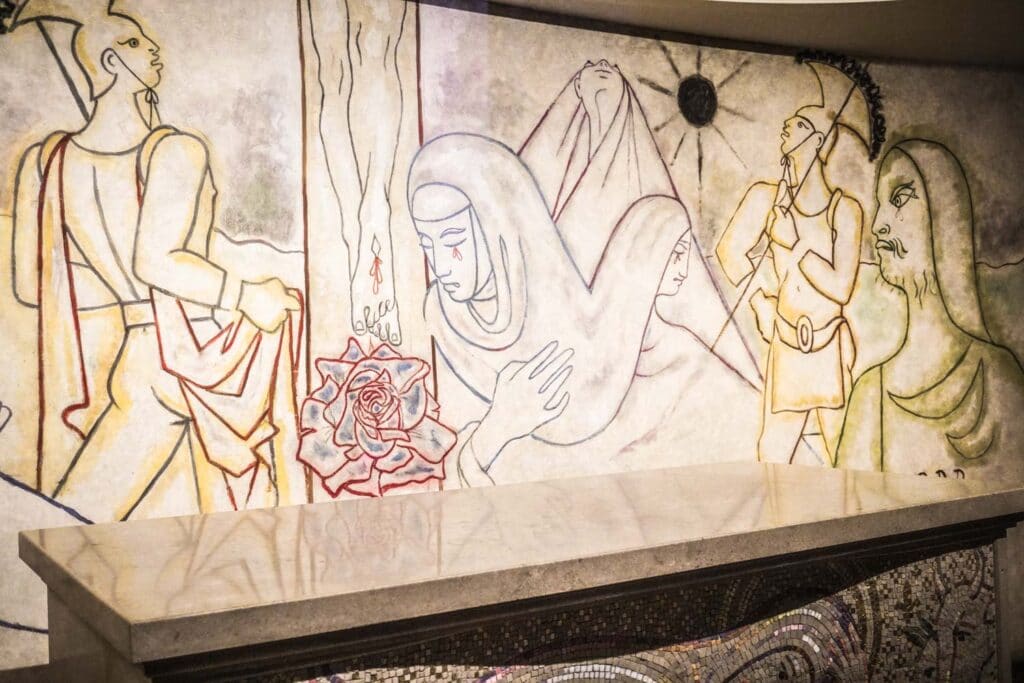
French novelist and director Jean Cocteau is best known for his writing (Les Enfants Terribles) and avant-garde films (Beauty and the Beast, and Orpheus, among others). However, Cocteau also blessed London with a unique series of murals.
Hidden in plain sight in a church on the corner of Chinatown in the West End, the murals are dedicated to the Virgin Mary and show the religious celebrations of the Annunciation, the Crucifixion and the Assumption. (And no, that’s not the one in Paris)
Bold and striking, the murals are one of London’s quirkier sights. You’ll find them in the Church of Notre Dame de France (And no, that’s not the one in Paris).
Ride the Mail Rail
Mount Pleasant
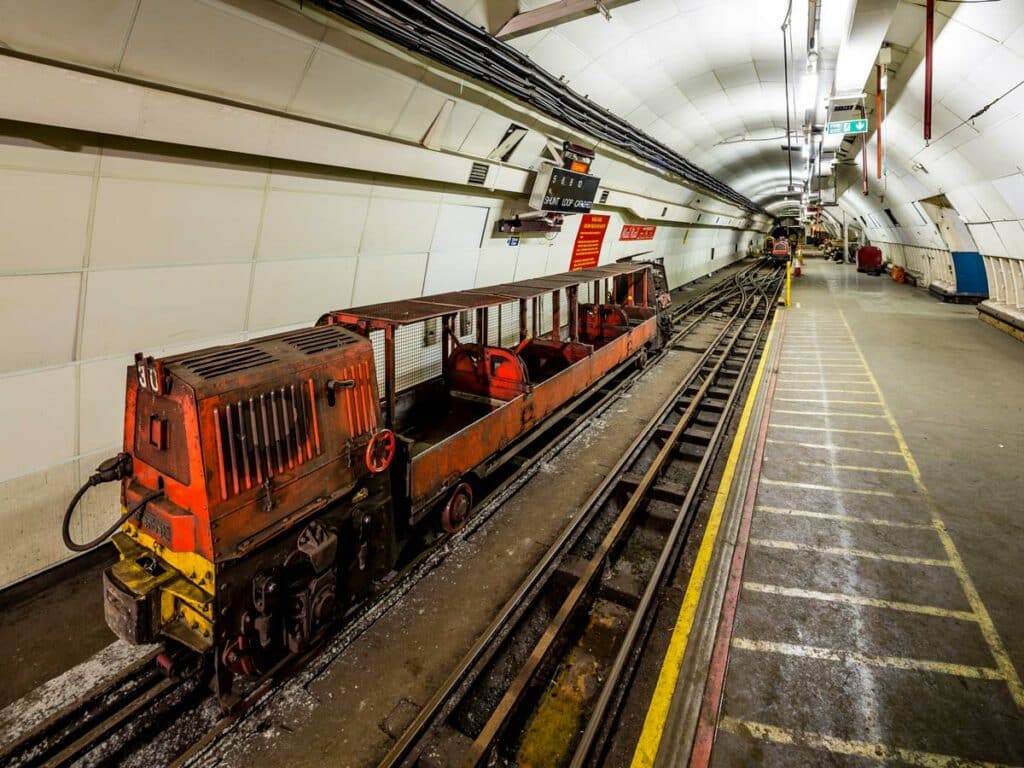
Quite a few Londoners will have heard of the Mail Rail but most people are hazy about what and where it is.
In its former life, the Mail Rail was the lifeblood of the Royal Mail postal service. Ferrying thousands of letters to and from the sorting office on Mount Pleasant, the railway operated from 1927 until 2003.
Today, you can hop aboard the railway as part of a visit to the Postal Museum. A train ride through a tiny tunnel in an immersive railway experience – certainly one of the more unusual ways to explore London’s subterranean world.
Feast at Bob Bob Ricard
Soho
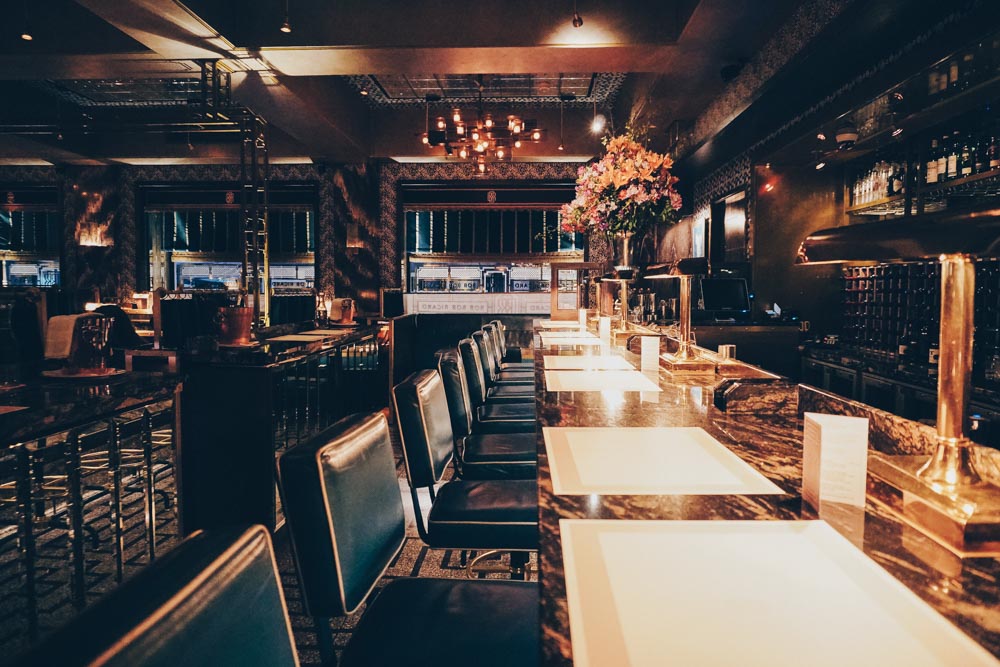
It’s no secret that Bob Bob Ricard is one of our favourite restaurants. Not only is the menu totally decadent – it’s the perfect spot for a splashy night out where all you want is good food, great cocktails and even better champagne.
Bob Bob’s appeal is that it lies a world away from the bland cookie-cutter restaurants that seem to dominate the city’s dining scene.
Cosily ensconced in your banquette booth, you are encouraged to ring the bell discreetly labelled “Press for Champagne” as you feast on lobster, truffled fries, souffles and other such indulgences. Dinner at Bob Bob is an unforgettable London experience – book ahead at weekends.
Read more: Bob Bob Ricard Review
Step into the World of Harry Potter at The House of Minalima
Soho
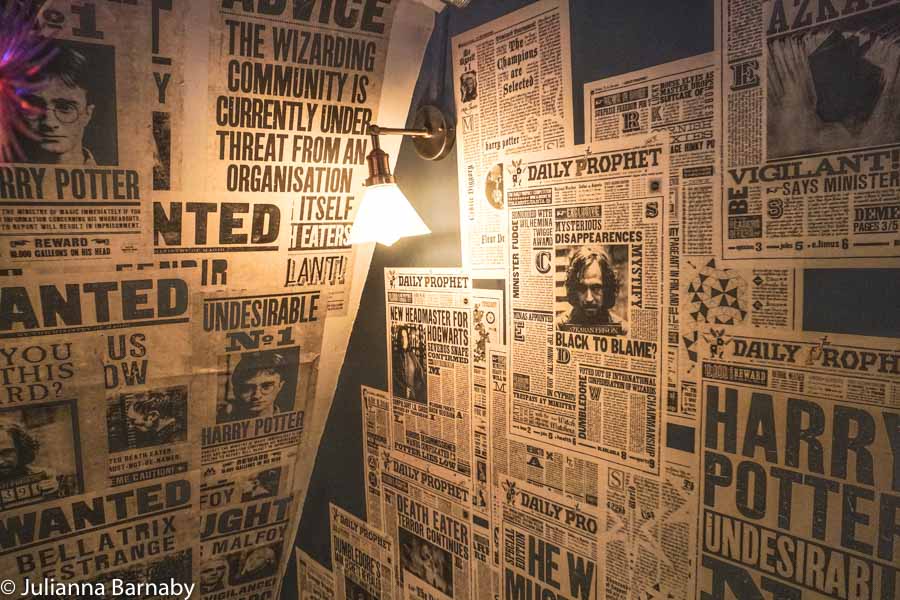
Who else is a raging Harry Potter fan? We’ll freely admit that even years after the final film, we still sit down with the box set every Christmas, drawn into the world of The Boy Who Lived.
If you can relate, you should totally get yourself down to The House of Minalima – one of our fave quirky places in the capital (and one of London’s top Harry Potter sights).
The House of Minalima is the brainchild of Miraphora Mina and Eduardo Lima, the creators of the graphic universe in the Harry Potter films. The store features all kinds of graphic works that appear in the film – including some that have come straight from the Harry Potter Studios.
From wanted posters of escaped Azkaban inmates (Bellatrix Lestrange still frightens us to this day), to books adorned with Gilderoy Lockhart’s’ simpering face and copies of the Quibbler and The Daily Prophet, it’s part-shop-part immersion into the world of wizarding.
What’s more? There’s a whole floor dedicated to Fantastic Beasts too (hello Eddie Redmayne..)
Read More: Step into the World of Harry Potter in Soho – The House of Minalima
Take a Snap Running Through to Platform 9 ¾
King’s Cross
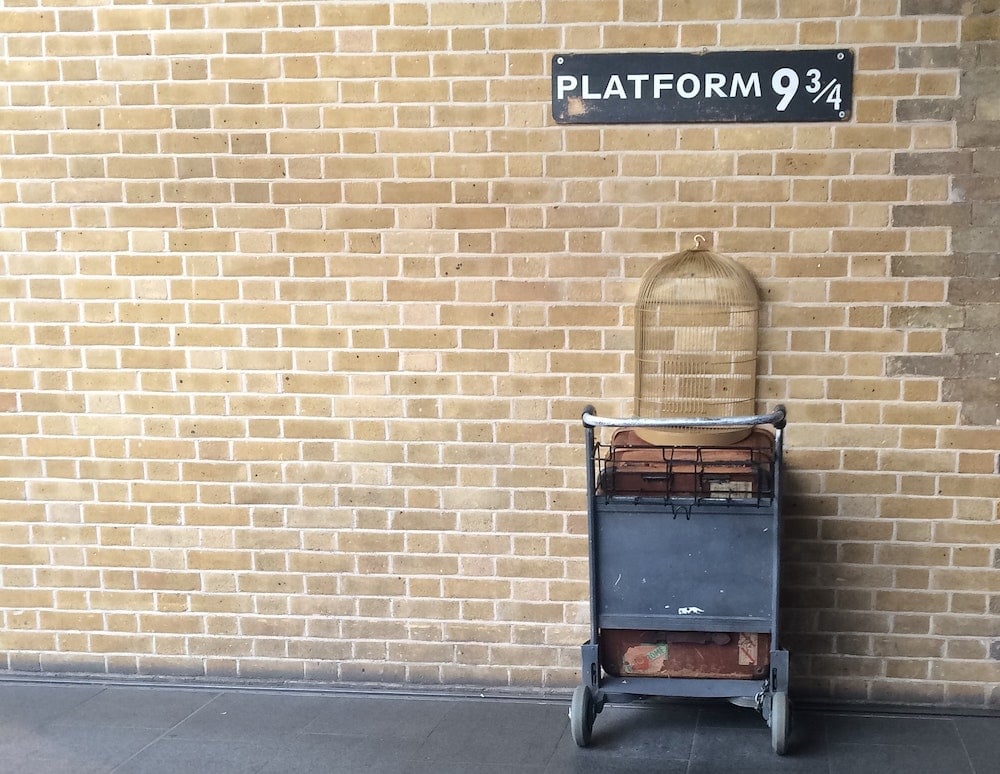
There’s no shortage of Harry Potter finds in London – but a trip to Platform 9 ¾ to take a picture of you pretending to run through the wall is pretty much mandatory. You’ll find it in Kings Cross Railway Station.
Just head to the back of the station and look for the crowds of people wearing Hogwarts scarfs and brandishing HP merch. You can’t miss it.
Get Street at Leake Street Graffiti Tunnel
Waterloo

It’s no secret that London is a street art lover’s dream.
Shoreditch, Camden, Walthamstow, Croydon and Brixton are great places to go if you’re looking to spot some cool murals. If there’s one spot that’s always packed with awesome works from a diverse range of artists it is Leake Street Tunnel.
The tunnel is just behind Waterloo Station and constantly features an ever-changing rotation of street art. The tunnel first rose to fame when Banksy organised Cans Festival in 2008, which saw 30 artists transform the bleak tunnel into a multi-faceted and colourful canvas.
Whenever you visit, you’re bound to see a new piece in the making, not to mention hundreds of others sprayed on every single inch of the tunnel’s walls.
The tunnel is also surrounded by (and filled with) great bars and restaurants for a bit of a recharge should you need it.
Read more: Street Art in Camden
Visit the London Transport Museum’s Depot
Acton
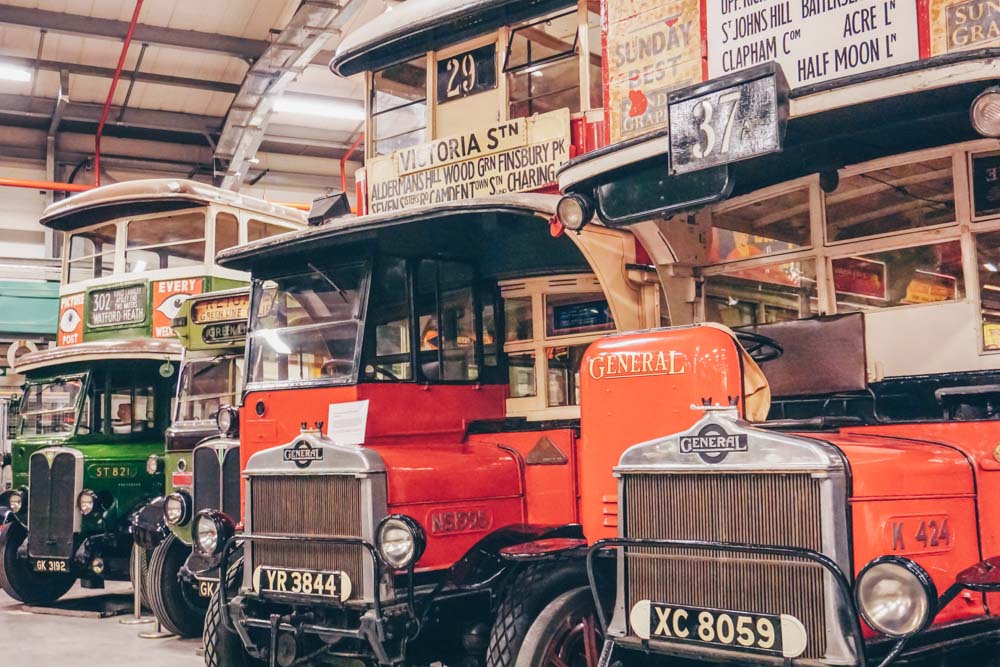
A trip to the London Transport Museum is one of the more unusual days out in London – but if you want to go the full hog, you should travel out to Acton to visit the museum’s vast depot.
The depot is packed with the transportation of times past. Ever wondered what trains looked like on the Metropolitan Line in the 30s? Now’s your chance to find out. The place is packed with literally hundreds of thousands of vintage vehicles and transport-related items, including some uber-cool vintage tube posters.
The depot only opens to the public for special events – check the London Transport Museum’s website for more details.
Play Bingo in a Beautiful Grade I Listed Cinema
Tooting
Billed as the most spectacular cinema in Britain, the former Granada Cinema in Tooting was one of a handful of Art Deco cinemas built in the thirties.
These days it’s a Buzz Bingo and without a doubt, it’s the most beautiful space you’ll ever play bingo in – and one of the most unusual places to visit in London to boot.
The interior was inspired by the Alhambra Palace in Granada, Spain – that will explain the soaring arches and intricate carvings inside then. It can be a bit distracting – all that beauty when you’re simply trying to play a game of bingo, but we’re sure you will struggle through.
Check Out Severndroog Castle
Woolwich
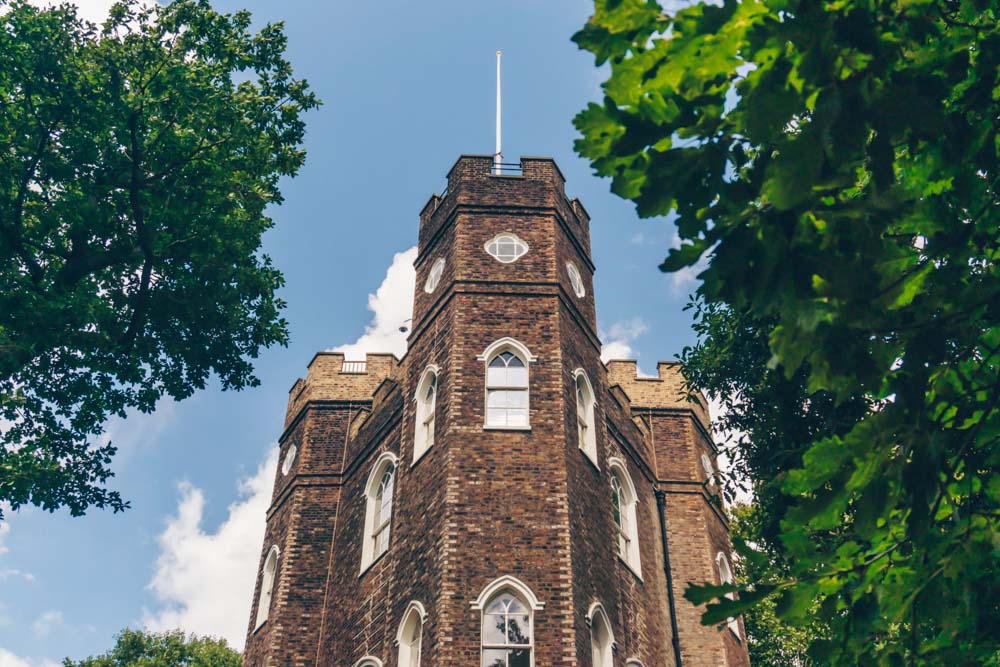
Eltham is one of those surprise places that you never think to visit – but when you do, you find out it’s home to some of London’s weirdest spots – Severndroog Castle being a case in point.
The unusual London castle was built as a memorial to naval commander Sir William James by his wife in the 18th century.
An architectural oddity, the triangular castle is made of three rooms, each atop the other and crowned with a viewing platform that boasts some of the best views in South London.
You can visit from Thursday to Sunday 9am – 3.30pm and see what this obscure place is all about.
Visit London’s Smallest Police Station
Trafalgar Square
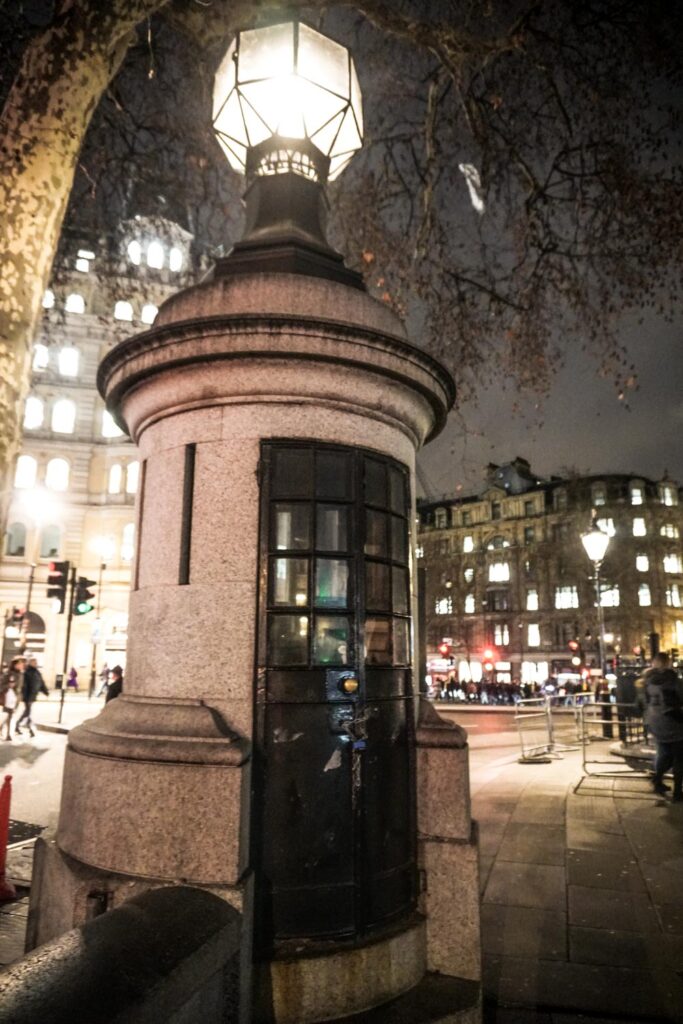
Have you ever wondered what the small Tardis-like box perched on the corner of Trafalgar Square is? The answer is London’s smallest police station.
The box (which, in truth isn’t a police station but an observation post made from a hollowed-out lamppost), gives the officer inside a view across the whole of the square – an important as Trafalgar Square is used as a frequent spot for protesters.
In the day and age of modern surveillance, the boxlike station is no longer used, but that shouldn’t stop you from striking a pose outside anyway.
See the Views from Westminster Cathedral’s Bell Tower
Westminster
Westminster Cathedral makes for an interesting visit on any day of the week, but did you know it also makes for one of the best viewing platforms in London?
Yep, you can actually climb to the top of the cathedral’s tower and soak in views of the city right from its heart, 64 metres up in the air. It’s not often you get a chance to see the capital from that angle.
The tower is open to the public on Fridays, Saturdays and Sundays from 11am to 3.30pm.
Get Wet at Lee Valley White Water Centre
Waltham Cross
The Olympics may have brought a new sense of pride to London, but even though the events are long-finished, their legacy lives on.
The Lee Valley White Water Centre may technically be in Herefordshire, but it’s close enough that you can get there without breaking a sweat. Believe us when we say that it is worth the effort.
Where else are you going to get the chance to tackle white water rapids, go canoeing, kayaking or tubing less than an hour from the centre of town?
Wrap Up and Visit the Hampstead Observatory
Hampstead
If you want to see something that will really impress, you can actually go and look at the planets and stars at an observatory in London.
Hampstead Observatory opens to the public from mid September to mid April and gives you a chance to gaze through some astronomically large (geddit?) telescopes. The sessions do depend on the alignment of the planets so you have to be flexible.
They also happen in winter because you’ll have less light which is better for seeing the planets with, so remember to bring a warm coat.
See the York House Watergate – A Testament to the Banking of the Thames
Embankment
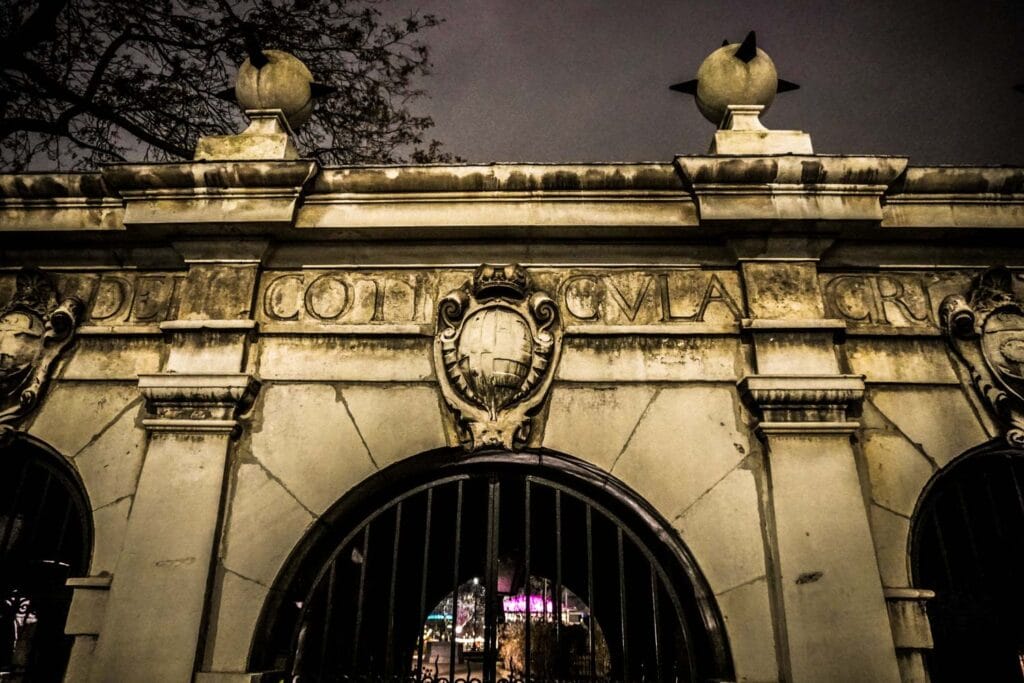
The banking of the Thames was a feat of Victorian engineering. The Thames is a tidal river, and prior to the banking project, its shores extended way beyond the river we see today.
The York House Watergate is one of the few remaining watergates that used to provide entry to the riverside mansions that lined the shores of the river.
Tucked away down a narrow alley that begins about halfway up Villiers Street, the gate shows just how much the Thames was narrowed when it was banked- it stands just under 144 metres from the bank of the Thames today.
Read More: Cool Things to See in and Around Covent Garden
Check out the Christopher Wren Architecture at St Stephen Walbrook
The City of London
Christopher Wren basically re-designed London after the Great Fire of 1666. Most famous for his work on St Paul’s Cathedral, he actually created the designs for a number of buildings in central London, St Stephen Walbrook among them.
The church is an unusual place – particularly for architectural buffs to see Wren’s work on a much smaller scale. It’s also just rather beautiful. The knave is bright and airy in a way that stands in direct contrast to other more gothic places of worship.
Don’t forget to pop into the Mithraeum (featured above) a few doors down once you’re done.
Visit the Clown’s Gallery and Museum
Dalston
If you’re after an afternoon of clowning around (harr harr) you probably can’t do better than The Clown’s Gallery and Museum. Established in 1959, the museum has been building a collection of items that illustrate the fine art of the clown.
We’re guessing some of you might be getting the spooks just thinking about it, but if you’re interested (or just looking for something different to do) this place will provide plenty of laughs.
Highlights include the Egg Gallery, where you can see the individual face painting patterns of clowns painted on eggs. Funnily enough this was originally a practice to protect your pattern against plagiarism, the eggs making a perfect shape to represent a human head.
Get Spooked at Crossbones Burial Ground
Southwark
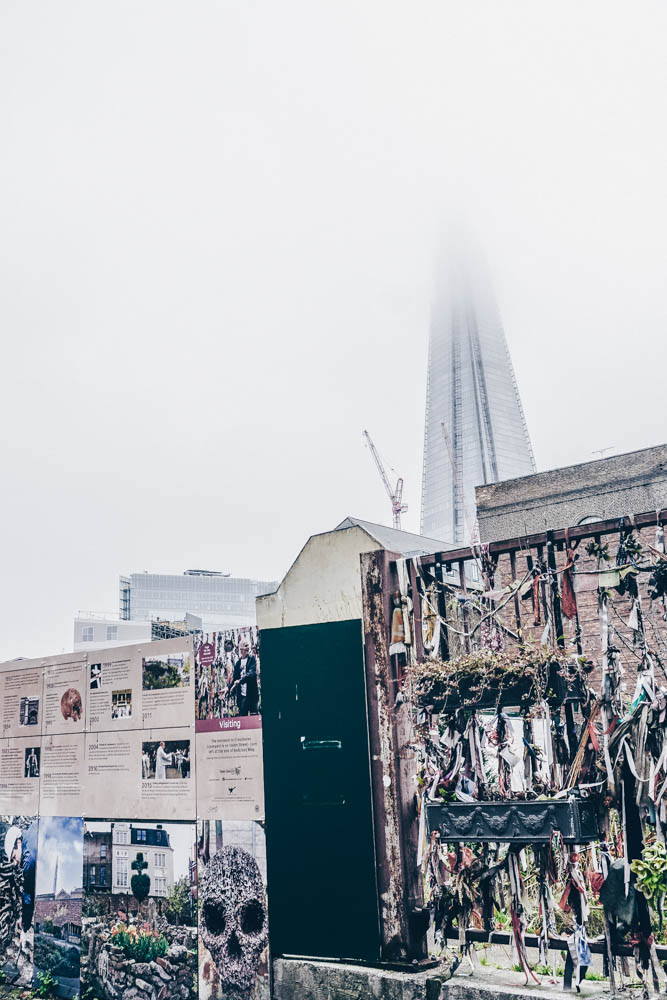
Make your way through the maze of streets in Southwark to find the rather strange and eerie Crossbones Burial Ground.
A lot of weird things to see and do in London revolve around bodies and death, and Crossbones is no exception.
The burial ground once sat within London’s poorest slum and many of the city’s paupers and prostitutes are buried within its grounds. The graveyard closed in the 1850s, by which time it’s estimated that over 15,000 people were buried within it.
Today, people use the site to commemorate loved ones who have passed away – the ground’s boundaries are covered in flowers, ribbons and wreaths in varying stages of decay.
You can also attend the monthly Vigil for the Outcasts – a service meant to remember outcasts living and dead.
See Giro’s Grave
St James’
What’s so weird about some guy’s grave we hear you ask. Well, first off it’s not a guy, it’s a dog, and what’s more that dog was a nazi.
Giro was a pet terrier. He came to London with his owner, German ambassador Leopold von Hoesch, in 1932. Von Hoesch would go on to represent the Nazi Party after they seized power a few years later.
He’d also go on to create a memorial for his beloved pet, who strangely enough died of electrocution after chewing through an electrical cable. That memorial is the only one you can find in Britain that commemorates a nazi.
You can find it at Carlton House Terrace, St. James’s, London SW1Y 5AJ.
Pull Some Teeth at The British Dental Association Museum
Marylebone
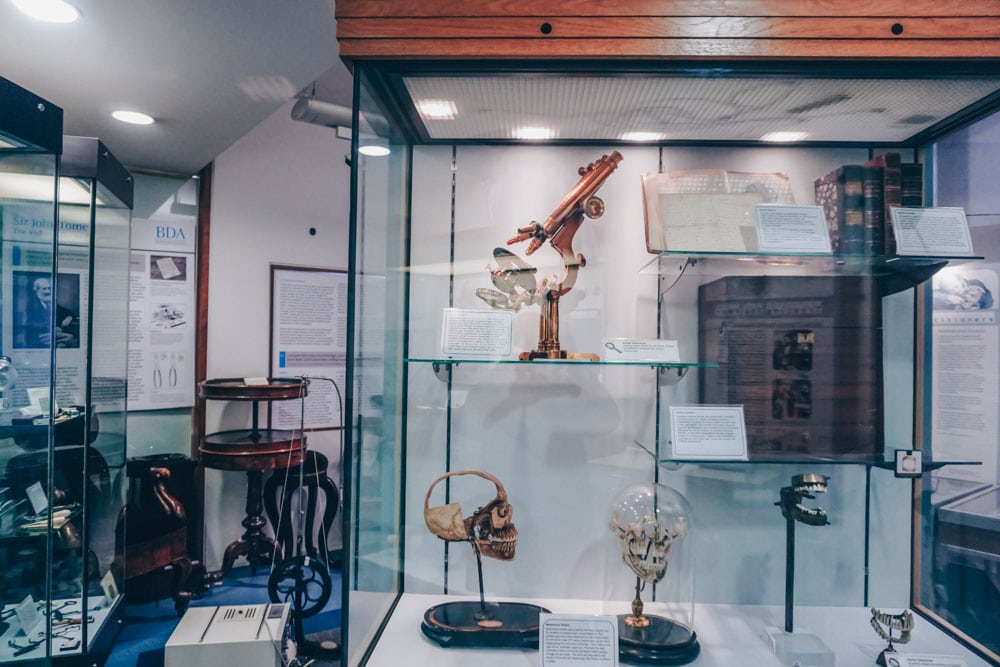
Housed in a tiny (and we mean tiny) room in the British Dental Association, this museum charts the history of the British dental profession.
Modern dentistry, with its white rooms and concerns about hygiene, is a very recent thing – the museum has a few (pretty horrifying) images of blacksmiths pulling out people’s teeth, as well as some of the crude items used to do the job.
Though it’s small, there are a couple of fun interactive exhibits – you can test your skills at pulling people’s teeth, or using a treadle-powered drill to drill into a tooth (don’t put it in your mouth, it’s sharp enough to do damage).
Hopefully you’ll time your visit to coincide with the hours of the ebullient guide, who talked us through the exhibits and really brought the museum to life.
Freak Yourself Out at The Old Operating Theatre
Borough
If you’ve got the stomach for it, The Old Operating Theatre never fails to make for a curious day of exploration.
The place was actually lost for many years, then rediscovered when an adventurous researcher decided to climb to the attic of St Thomas’ Hospital in Southwark.
The space used to be an operating theatre, primarily used for female surgery cases. The space has been restored to a worryingly accurate degree. What’s the worrying part? The fact that you can see where people used to gather round to watch the operations.
Given the quality of surgery back in the 1800s when the space was in use, it creeps us out no end.
Knock Yourself Out at the Anaesthesia Heritage Centre
Marylebone
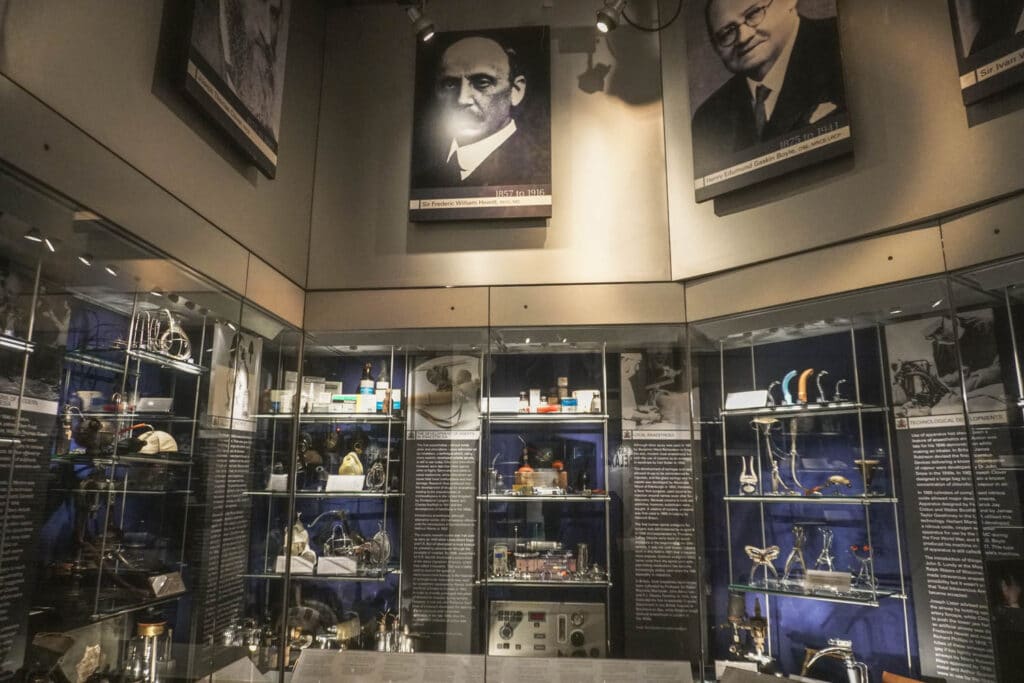
Another quirky quease-inducing museum in a small room – the Anaesthesia Heritage Centre showcases the curious and interesting history of the use of anaesthetics in medicine.
While the history is relatively tame, the implements used in the past were not – you can’t help but shudder at the drawers of gigantic needles and syringes. Ring the bell at the Association of Anaesthetists and they’ll show you down.
Peek at the Hyde Park Pet Cemetery
Hyde Park
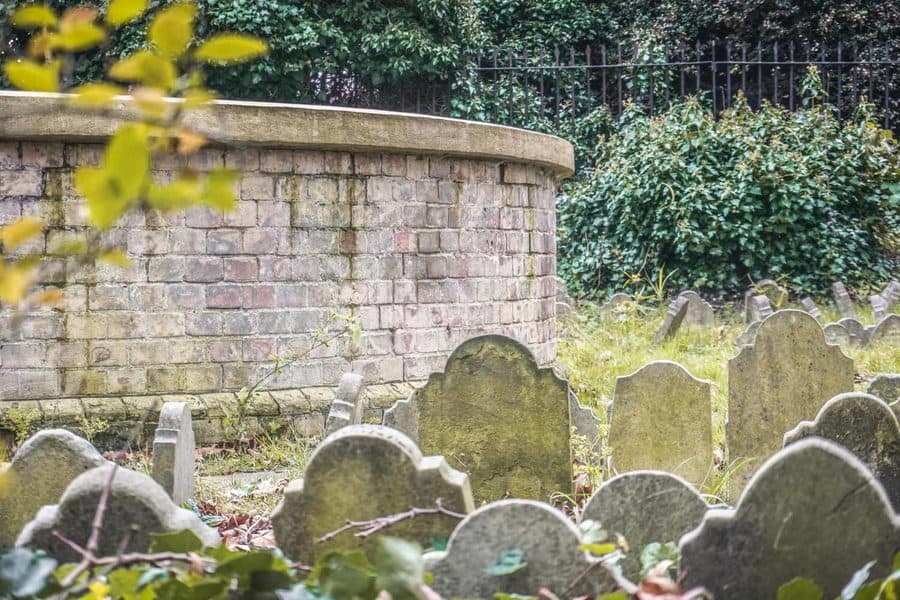
A sad and wobegon spot on the edge of Hyde Park, the Hyde Park Pet Cemetery was an unofficial pet cemetery in the then-parkkeeper Mr Windbridge’s back garden. After the first burial in 1880, over 300 pets were buried by Mr Windbridge until he closed it in 1915 due to a lack of space.
You can’t get inside the garden itself, but you can see it through the railings from the pavement outside the park.
Visit Postman’s Park
Barbican
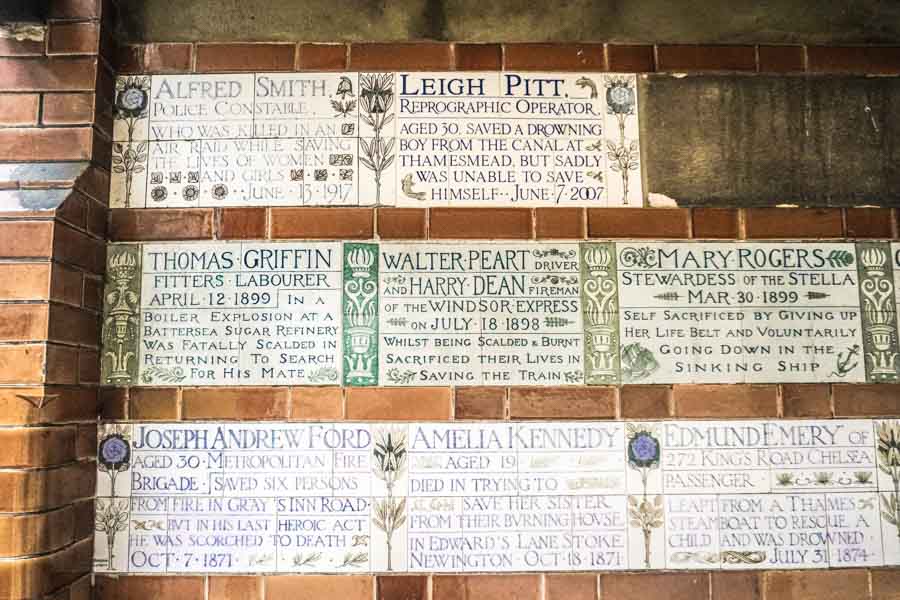
Postman’s Park is both touching and tragic – it was built to memorialise Londoners who died doing heroic deeds. You can read about their sad and sometimes grisly deaths – there are several drownings, tales of people who caught fire trying to put out one another and more strange tales you can’t help but marvel at.
If you’re thinking that it sounds a bit familiar – the park actually features in the film Closer. Natalie Portman’s character takes her pseudonym from a plaque on the memorial at the beginning of the film.
Read More: Postman’s Park – London’s Memorial to Heroic Self Sacrifice
Check out the Golden Boy of Pye Corner – The Alternative Monument to the Great Fire of London
The City of London
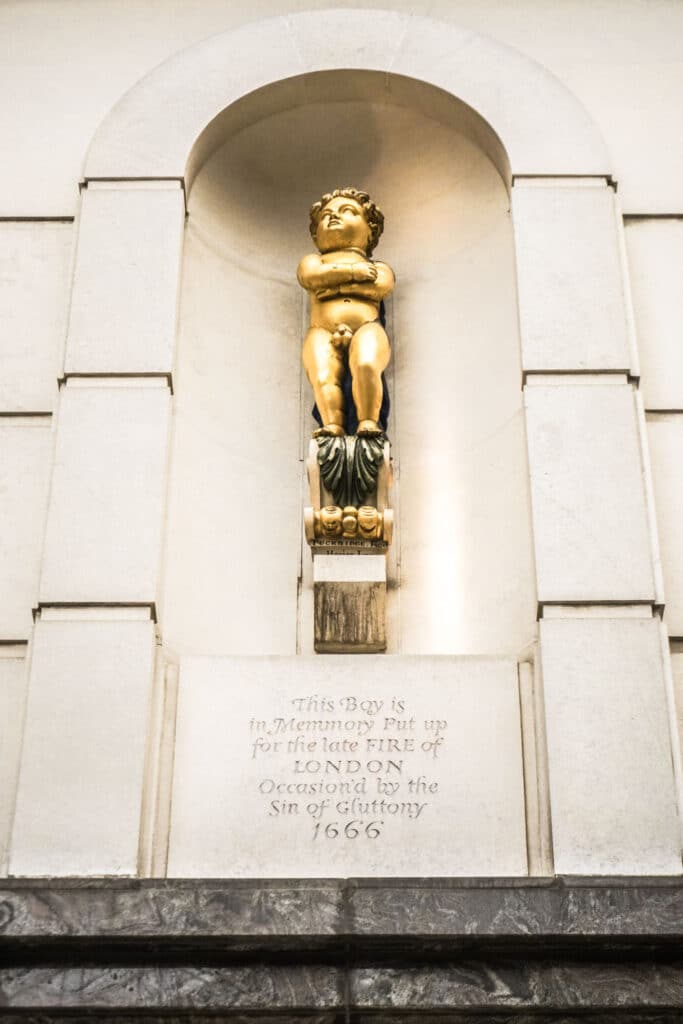
Everyone knows about The Monument that was erected as a memorial of the Great Fire of London… but there’s another, much smaller and more random memorial to the fire on the corner of Cock Lane (seriously, that’s its name).
Stand on the corner, look up and you’ll see a small statue of a fat, golden boy set into the wall on a spot marking the outer limit of the Great Fire. He stands as a reminder of the true cause of the great fire (it started in a bakery on Pudding Lane and finished on Pye Corner) – gluttony. Be warned.
Weird and Unusual Things to do in London: Map
Looking for More Unusual London Guides?
- 30 Hidden Gems in London – Secret Spots You Have to Discover
- 18 Weird Museums in London: Discover The City’s Small, Quirky and Unusual Museums
- 64 Fun and Interesting Facts about London You’ll Absolutely Love
- Famous Blue Plaques in London To Look Out For
- The History of London’s Roman Amphitheatre and the Unlikely Story of How it was Discovered

